This website uses cookies to improve your browsing experience and analyze the use of the website. Learn More


NYC Subway Pass
Which metrocard to buy.

How to pay for your NYC subway ride can be confusing if you are visiting NYC.
Should you get a pay-per-ride or an unlimited MetroCard, or maybe you just pay with OMNY using a contactless credit card?
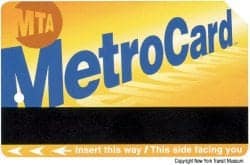
But, once you understand the basics, the choices aren't so daunting.
As local tour guides who not only use the subway for personal transport but also for our tours, this is definitely one of the topics we get asked about the most.
And, it's our hope, that this post will help you determine which form NYC subway MetroCard is best for you.
And, if you would like to have someone show you how to use the subway in NYC, then consider taking our subway tutorial.
Like most of our tours, it's free to book and runs on the pay-what-you-wish model.

Let's get going!
- Unlimited vs. Pay-Per-Ride Card vs. OMNY
- How to Purchase a MetroCard
- Tips on Using the Subway
- Which Subway App is Best?
- Subway or Hop-On-Hop-Off Bus?
- Things to Do in NYC
Is There a New York Subway Pass for Tourists?
New York City does not currently offer a subway pass intended only for tourists. However, you don't have to worry!
We'll show you where and how to purchase a card, and how much to spend, with special tips for tourists and visitors.
UNLIMITED vs. PAY-PER-RIDE METROCARDS
There are two types of cards to choose from: a Pay-Per-Ride card and an Unlimited Ride card.
With a Pay-Per-Ride card, your card will deduct $2.90 every time you take the subway/bus.
An Unlimited Card costs a flat fee and you can use the subway/bus as many times as you want within a set number of days.
When deciding which card is best , think about how long your trip is and how many times you think you might be taking the subway.
Also, consider the number of people in your party.
*Before buying a MetroCard, read below about NYC's OMNY program which began its rollout in 2019.
Pay-Per-Ride MetroCards
- Add money to your card and each time you 'swipe' your card to enter the subway, $2.90 will be deducted from your card balance.
- There is a one-time $1 fee when you purchase a card. Don't throw your card away when it runs out of money, or you will have to pay $1 again when you buy a new card.
- You can buy a single-ride card for $3, but it is unlikely you will need this type of card.
- See below for what discounts are available.
- Up to 4 people can use the same MetroCard. It will still cost $2.90 per person per ride but you do not need to pay the $1 fee for multiple cards.
- Each ride includes a free transfer (within two hours) between subway lines, bus, and subway, or between buses.
- This card can be used on the JFK AirTrain connecting the airport to the subway system (additional cost applies). See our Manhattan to/from JFK Airport .
- See below for other transportation systems that accept the Metrocard.
Before we continue, we are running this poll in our NYC Travel Tips Facebook group.
Would you like the option of a 1-hour subway tutorial tour? Click the link to vote or email us .
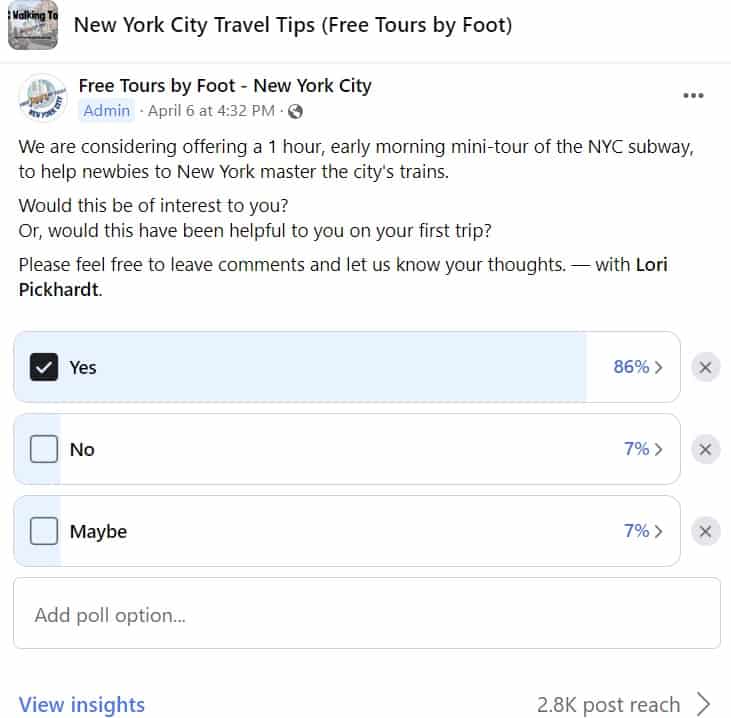
Unlimited MetroCards
This card is valid for unlimited subway and bus rides until midnight from the day of first use. You can choose a 7-day unlimited card or a 30-day unlimited.
There is a $1 fee when you purchase a card. *Do not throw away your card when it expires, or you will have to pay $1 again for a new card.
An unlimited 7-Day MetroCard costs $33 and allows unlimited swipes. See below for what discounts are available.
While a single ride costs $2.90, the Unlimited card saves you money because the more you use it, the cheaper each ride is.
- for 13 trips = $2.53/ride
- for 15 trips = $2.20/ride
- for 20 trips = $1.65/ride
If your stay is 30 days or longer, consider a 30-day unlimited card for $127 ($63.50 reduced fare).
Important rules that apply to Unlimited MetroCards:
- It can only be used by 1 person.
- Once you have swiped the card to enter the subway, it cannot be used again for 18 minutes.
- Unlimited Ride MetroCards are not accepted by the JFK AirTrain , Express buses or PATH trains.
- See below for other transportation systems that accept this card.
As an alternative to using a MetroCard, riders can now tap to pay at the turnstile!
Metrocard machines were scheduled to be phased out in 2023, but this date is now 2025.
With the new OMNY system, you can tap a credit or debit card onto the OMNY reader, smartphone, or wearable device.
You also have the option of buying an OMNY card, a durable hard card ( see more below ).
The OMNY tap-to-pay method is available at all subway stations in NYC and all MTA-operated buses.
A great feature of the OMNY system is the weekly fare cap .
Starting on a Monday, once you pay for 12 rides, with the same device or card, you can ride for free for the rest of the week through Sunday.
A few important things to know:
- OMNY only offers the “pay-per-ride” option so you will pay full price every time you tap to pay. Unlimited passes and other discount prices will be added to the system later.
- You get most of the same features of a MetroCard such as free transfers and the ability to pay for yourself and up to 3 other people on the same card.
- OMNY accepts Visa®, Mastercard®, American Express®, Discover®, and JCB networks. But debit cards requiring a pin cannot be used at this time. Be sure to check the MTA website to see if your card is accepted by OMNY.
If you want to switch to the OMNY tap system but do not have a credit card or contactless form of payment, you can purchase an OMNY card.
OMNY cards are not sold in subway stations yet. You can buy them and reload them at stores like Walgreens, CVS and 7-Eleven.
Since MetroCards are still available until the end of 2024, so until then, it may not be worth buying an OMNY card, which costs $4 more than a MetroCard.
On the other hand, if you use a pay-per-ride MetroCard, you do not get to take advantage of the OMNY fare cap mentioned above .
Find out more about the OMNY card here .
You could also listen to our NYC Travel Tips podcast episode on the NYC subway. You can get our podcast wherever you get your podcasts.
What other transportation systems accept the MetroCard?
In addition to the New York City subway and bus system, both unlimited and pay-per-ride cards can be used on:
- Staten Island Railway (stay and explore Staten Island after taking the free Staten Island Ferry )
- Roosevelt Island Tram (to get one of the best skyline views of NYC . Learn more by reading our post on riding the tram and visiting Roosevelt Island .
- New Jersey PATH trains between Manhattan and certain locations in New Jersey (an extra fee applies for the pay-per-ride MetroCard).
See the official MTA website for:
- subway and bus maps
- service status and delays
- planned service changes
- the MTA TripPlanner to figure out your route.
DECIDING WHICH CARD IS BEST FOR YOU
When deciding what card to get, ask yourself how many times you think you will be taking the subway within the number of days you will be here.
Also, take into account the number of people in your group and their ages as there are discounts for seniors and toddlers. (See below ).
If you think you will be taking the subway at least 12 times, the Unlimited Card will likely save you money.
If you think you will take the subway just a few times, go for the Pay-Per-Ride card.
Remember that an Unlimited Card can be used only by one person, and you would each have to buy your own Unlimited card.
But if you are traveling with several people, it makes sense to buy a Pay-Per-Ride card since up to 4 people can enter the subway with the same card.
The card will deduct $2.90 for each person when you enter.
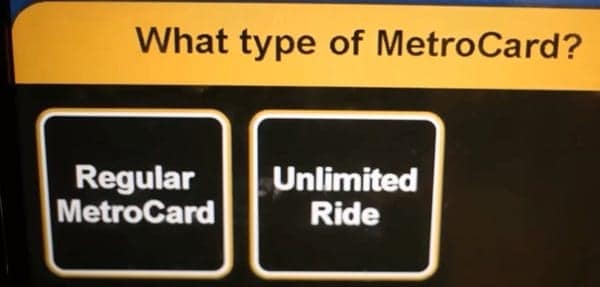
Discounts to take into account:
For families, up to 3 children can ride for free with one fare-paying adult, provided all the children are under 44 inches (112 cm) tall.
This policy is good for subways and local buses, no matter which type of MetroCard you choose.
Seniors 65 years+ and also individuals with qualifying disabilities may qualify for reduced fares.
See below to learn how Reduced Fare cards work.
Reduced-Fare Customers - Discounts to take into account:
Seniors 65 years and over and those with qualifying disabilities can get a reduced fare.
- Bring your valid ID, such as your passport or driver's license that shows your age
- Go to the station agent in the booth where you will show your ID and pay $2.90 for a non-refillable MetroCard good for TWO rides.
- You do not have to pay the $1.00 new card fee.
- Not all stations have agent booths.
- This 2-trip MetroCard will be accepted at all subway stations, local buses, and Staten Island Railway.
- This card is not accepted for any other bus lines or the Roosevelt Island Tram.
- For more information, click here .
Student MetroCards
Student MetroCards are distributed by NYC schools and allow eligible students 3 free rides per school day to and from school and school-related activities and events.
Note: To receive a refillable reduced-fare MetroCard, you must apply and wait a few weeks to receive it. So unless you plan on staying in NYC for a very long stay, stick with the non-refillable card.
Taxis and Uber
If you like to take taxis, then having a pay-per-ride MetroCard may be your best choice.
You might find that taking a taxi makes more financial sense, especially if you are going short distances.
Not only does a taxi save you time (if there is no traffic), but in some cases, a taxi can be cheaper for most trips under 2 miles (3.2 km), especially if you have 3 or 4 people in your group.
See our posts on how to take a taxi in NYC and use Uber in NYC .
PURCHASING YOUR METROCARD
MetroCards can be purchased from the vending machines at subway stations and some shops and newsstands around the city.
Check here to see what merchants near you sell MetroCards nearest you.
The easiest way is to purchase your card at a station from the vending machines.
There are two types of machines pictured here: the larger machines on the right let you pay with cash, credit cards, or ATM/debit cards.
The smaller machines are for credit or debit cards only.

Paying with a credit or debit card:
If you pay with your credit card, you will be asked to enter your zip code after you dip your card.
If you do not have an American zip code, you can use 99999 for a zip code.
Paying with cash:
If you pay with cash and pay with a large bill and not the exact amount, you will receive the difference back but in $1 coins, not bills.
The machine can only return up to $9 in change.
Tip: Always get a receipt in case you lose your card or it does not work.
Here is a step-by-step instructional video.
TIP: A good way to have fun and get an in-person lesson about the subway is to take our Manhattan in One Day Tour .
Once you have purchased your card, here are some tips on how to use it!
Make the most of your metrocard and subway travel.
Foreign Language Speakers
The Metropolitan Transportation Authority (MTA) website offers translations of their site.
Simply look in the lower left-hand corner of the page and you will see an option for Google Translate.
Ride the Subway with a Tour Group
Our New York Subway Art Tour , our All-in-One Tour , and our Manhattan Night Tours use the subway.
This will help you familiarize yourself with the New York Subway System.
You'll get an expert lesson on using your card, including how fast to swipe your card through the turnstile.
Swiping too fast or too slow won't work - you have to find just the right speed!

MetroCard Offers Discounts and Deals
For certain attractions, theater tickets, and events. Most New Yorkers do not even know this!
Click here for what discounts are being offered currently.
We can also tell you where to find discounted tickets for major attractions and Broadway shows .

Enjoy the ride!
Perhaps the best part of riding the subway is the great free musical performances you'll come across.
Our post on where to find NYC street performers and music in the subway will lead you straight to them!
Other means of traveling around NYC
- Travel by various ferries .
- Take a hop-on, hop-off bus tour .
- Take a hop-on, hop-off boat tour, or cruise .
See which bus tours, cruises, and ferries are included in NYC discount tourist passes .
Choose a Destination... I want them all PLUS general travel tips. Amsterdam Berlin Boston Charleston Chicago Dubai Lisbon London Los Angeles Miami Nashville New York City New Orleans Paris Philadelphia Prague Rome San Francisco Washington DC
About The Author

Stephen Pickhardt
North america, united kingdom & ireland, middle east & india, asia & oceania.

Public Transportation in New York City - New York MetroCard
The Big Apple is exactly that - big! Getting around New York can be complicated, but it doesn't have to be. Read our handy guide to New York's transportation system and you'll be a local expert in no time.
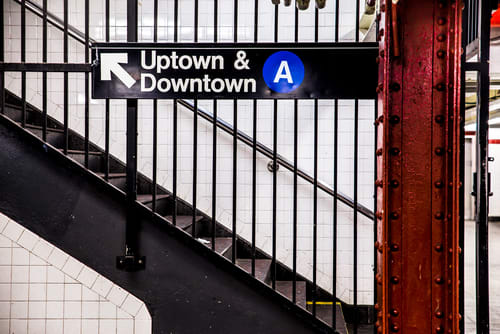
For public transportation in New York City, you have two main options. They work on the same system with the same tickets, so you can combine the two for the same price.
The subway: Almost always the fastest way to get anywhere, except late at night when taxis can — and do — fly through the city streets.
Bus system: Not often used by visitors to the city, but a handy option in certain situations. Great for going up and down the avenues, or for people who can’t deal with lots of stairs.

The New York subway system can be a bit intimidating at first, and the locals do rush around. So, you might feel the pressure of someone right behind you in line getting ever more impatient. Don't worry, you'll soon get the hang of it.
New York MetroCard prices
A single ride is $2.90 and tickets are sold at vending machines. A 7-day MetroCard costs $34.00 and is a popular New York subway pass option. Some contactless bank cards can tap on and off through the OMNY system. If you take 12 subway trips in a week, you'll cap out at the same price as a 7-day MetroCard.
Please note: MTA Tickets are not sold online & are not part of The New York Pass®
Riding the subway with New York MetroCard
To enter, swipe your MetroCard through a reader and then wait for the display to say 'Go.' It can be tricky at first, but if you can’t get it working, remember you're not alone. Just watch other people, and do what they do.
While planning your New York trip, make sure to get a NYC subway map:
🗺️Download a Free Subway Map here >>🗺️

Safety on the NYC Subway
For many decades the New York City subway system had a reputation for being dirty and dangerous. The famous graffiti is long gone, but the stations and carriages sometimes still do suffer from people being unable to find the abundant station trashcans.
The bigger issue is safety, and fortunately, there is good news there as well. The amount of crime reported throughout the system is way down from its peak, but that’s not to say you shouldn’t be cautious.

Hop on, hop off buses: an alternative to NYC public transport
We honestly believe that a ticket on a sightseeing bus gives a greater return for the money than almost any other expenditure the traveler can make. It will save you limitless time and also visually show you many other things you would never have found for yourself.
There are many good sightseeing systems in New York, but we would recommend Big Bus hop-on hop-off tours, available with The New York Pass® There are three routes to take you around Manhattan and the stops cover the very best of NYC Attractions.
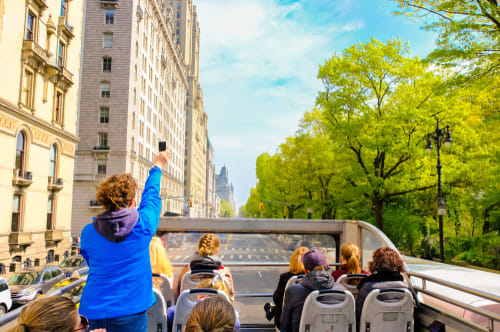
Experience everything New York City has to offer with The New York Pass®
Planning your New York trip? With The New York Pass®, you can explore big-name landmarks, local hotspots, and epic tours, all on one pass, all for one price. Not only that, but you'll enjoy savings of up to 50%, compared to buying individual attraction tickets.
✈️ Buy The New York Pass® ✈️
Buy with confidence
Free cancellation.
Plans can change, we get it. All non-activated passes are eligible for a refund within 365 days of your purchase date.
Got a question?
Check out our FAQs or live chat with our customer service agents now
The New York Pass® is highly rated, but don't just take our word for it!
Have a 5% discount, on us.
More savings? You're welcome. Sign up to our newsletter and receive exclusive discounts, vacation inspiration and much more.
- Thick check Icon By signing up, you agree to receiving email updates in accordance with The New York Pass privacy policy . We do not sell your personal data.
Essential Information About New York City MTA MetroCards
Pay for your subway and bus rides with ease using your Metrocard.
A MetroCard is a thin plastic card that is used to pay for bus and subway fares in New York City. You can buy them at a kiosk inside of nearly any subway station. They are also sold at some newsstands.
What Type of MetroCards Are There?
Now both Pay-Per-Ride and Unlimited Ride MetroCards are the same—if you have time on your unlimited ride purchase it will use that first, but both an unlimited balance and a cash balance can be maintained on the same card. There is also an auto-refillable MetroCard ( EasyPay MetroCard ), though this is more geared toward residents than typical visitors.
Where Can I Buy A MetroCard?
- MetroCards are available for sale in NYC Subway stations.
- MetroCards are not available for sale on NYC buses.
- Merchants displaying MetroCard signs in their windows (newsstands, grocery stores, etc.) sell select types of MetroCards.
- There is a $1/card fee when you buy a new MetroCard.
Pay-Per-Ride Fares
- This only applies at the time of purchase i.e. if you put $3 and then later $3 on your card you do not get the bonus.
- If multiple people are riding together on the same MetroCard the first person can swipe the card through the necessary number of times and other riders can walk through the turnstile following them.
- Pay per ride MetroCards are refillable.
Watch Now: Riding the Subway in New York City
Unlimited ride fares.
- Unlimited ride fares are good for one person to ride the subways and buses as much as they like during a specified window of time.
- Subway station agents cannot override the 18-minute rule—you must wait for the time to expire.
- 1-Day Fun Passes are no longer available.
- 7-Day Unlimited Ride MetroCards are $33 and are good until midnight on the 7th day.
- Monthly MetroCards that are lost or stolen and purchased with a credit or ATM card are insured against loss. How to claim a credit for unused days on your lost or stolen MetroCard
How Can I Pay for a MetroCard?
- MetroCard Vending Machines inside Subway stations take cash, ATM cards, and credit card .
- MetroCard Vending Machines can only return $9 change and do so with dollar coins.
- Subway Station Booths only accept cash for the purchase of MetroCards.
How Do I Know How Much Time/Money Is Left on My MetroCard?
- When you swipe a Pay-Per-Ride MetroCard through a Subway turnstile, you will see the remaining balance displayed.
- MetroCard Readers are available at Station Booths and in Subway Stations and if you scan your card through, it will display the expiration date for Unlimited Ride fare, as well as the remaining balance on your Pay-Per-Ride MetroCard.
Good to Know: Single Ride Tickets
- Single Ride tickets cost $3.
- They are available for sale only through MetroCard Vending Machines in Subway stations.
- They can only be purchased using cash.
- They must be used within two hours of purchase to ride a Subway or Bus.
- They are valid for one transfer Bus to Bus.
Good to Know: Fares For Kids
- Up to three kids 44" tall and under can ride for free with a paying adult on a bus or subway.
- Infants (under two years of age) can ride express buses free as long as they ride on the lap of the accompanying adult.
Getting Around New York City: Guide to Public Transportation
Getting Around Detroit: Guide to Public Transportation
Getting to LaGuardia Airport From Brooklyn by Public Transportation
Getting Around the San Francisco Bay Area: A Public Transit Guide
How to Travel From JFK Airport to Brooklyn by Train, Bus, and Taxi
Surviving Singapore on a Budget
Getting Around Beijing: Guide to Public Transportation
New Years in New York: How & Where to Get Your Free MetroCard, or $15 for a Cab
Getting Around Los Angeles: Guide to Public Transportation
Getting Around Taipei: Guide to Public Transportation
Getting Around Boston: MBTA "T" Subway System
Getting Around Delhi: Guide to Public Transportation
How to Get Around NYC Without Using the Subway
Getting Around Philadelphia: Guide to Public Transportation
Getting Around Kyoto: Guide to Public Transportation
Getting Around Chicago: Guide to Public Transportation

- Transportation
The MetroCard is a thin plastic rechargeable card used to pay the different types of public transportation in New York City : buses and subway .
The MetroCard is essential if you want to use New York’s transportation, as you will only be able to take the Subway using this card. Although for buses you can still pay with cash (exact amount), to use the subway you need to have a Metrocard.
You can either purchase the pay-per-ride or the unlimited Ride MetroCard .
Pay-per-ride MetroCard
If you buy multiple rides with this card, the cost is $2.75/ride, otherwise a single ride is US$ 3 . This card can be used by up to four people and you have access to unlimited transfers between subway and buses for 120 minutes . The minimum amount you can put on the card is US$ 5.50.
If you'd like to get a single-use card , the price will be US$ 3. You can't top up this card or change from the metro to a bus.
Unlimited Ride MetroCard
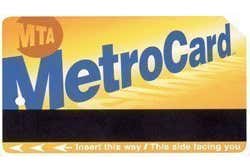
If you are planning to use New York’s transportation during your trip , the best option is to buy an Unlimited Ride MetroCard.
The MetroCard allows you to use the subway and buses unlimitedly until 3 am of the last day.
Where to buy your MetroCard?
You can purchase your MetroCard in any subway station. If you prefer using buses and don’t want to go to a Subway station, you can get your MetroCard in any tourist office or in many general stores in the center.
The New York MetroCard costs US$ 1.
You may also be interested in
Taxi cabs in New York are big, comfortable, and clean, and even have a screen where you can play whatever you like, including a GPS so that you can verify the taxi's route.
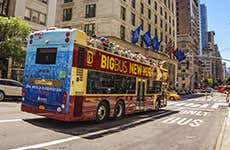
Tourist Bus
If you're looking to maximise your time, and want to easily take in New York's main monuments, the best idea is to take the New York Tourist Bus. Panoramic views, commentary, and much more!
Using the MetroCard
The metrocard.
The MetroCard is a thin, credit-card sized farecard made of (cheap) plastic. It has been the farecard for the subway for many decades, but is being replaced by the new contactless OMNY system mentioned earlier. The MetroCard machines will disappear completely in 2024, but you can still use the MetroCard until late 2024. You might still want to read this section as the MetroCard has some advantages that OMNY does not yet have. Most of the time, the card looks like this (front and back):

Occasionally, the MetroCard also carries advertisements on either side, so it might not be yellow as above, but it always has a black magnetic stripe at the bottom, three rounded corners, and one "cut off" corner.
The back of the card has what I call a physical expiration date which is usually set pretty far in the future. This physical expiration date is fixed and indicates the time when the card becomes unusable and must be exchanged for another MetroCard Vending Machine. This physical expiration date has nothing to do with the value and time on the card, so don't confuse this date with the expiration of an Unlimited Ride window (which I will explain that later). This physical expiration date is merely there to force old cards out of rotation.
A MetroCard can operate in two modes: Regular and Unlimited Ride. Physically, the card looks identical regardless of which mode it is currently in, so you can't tell the difference unless you swipe it at a card reader. Regardless of the type of MetroCard, it costs $1 just to buy the card.
Children under 44 inches (112 cm.) regardless of age can ride trains for free and don't need to buy a card as long as they are accompanied by a fare-paying adult. (The children can just walk underneath the turnstile.)
Regular MetroCard (Pay-Per-Ride)
The regular MetroCard (also known as a Pay-Per-Ride card) carries a real dollar value that decreases every time you take the subway (hence "pay per ride"). You can keep on adding value to the card whenever your balance runs low. The fee to buy the card itself is $1 and is not refundable. This $1 cannot be used to pay for rides (and is therefore not reflected in the balance).
In this card mode, the cost of riding the subway is $2.90 per ride (regardless of the destination or length of the ride).
Pay-Per-Ride cards can be shared by up to four people. To share a card, you can swipe the card multiple times to let multiple people through the turnstiles. You can do this individually by swiping the MetroCard, letting the first person enter, swiping it again to let the next person enter, and so on, or you can swipe the card multiple times back to back and then let the corresponding number of people walk through the turnstiles.
You can also use this Pay-Per-Ride card to pay for some other public transportation in New York City, such as the buses, the AirTrain to/from the JFK airport or the PATH commuter trains from/to New Jersey.
You can combine the values of multiple Pay-Per-Ride cards by going to the station booth and asking the attendant to combine them for you. When you do so, only the current balances are accumulated; the $1 fee for each card is not taken into account.
Unlimited Ride cards
Unlimited Ride cards allow you to ride the subway (and buses) as often as you want, as long as the time window that you bought for the card hasn't passed. There are only two time windows available:
- 7-Day Unlimited Ride: $34 (+ $1 fee for the card itself);
- 30-Day Unlimited Ride: $132 (+ $1 fee for the card itself);
Sorry, there aren't any single-day or weekend passes. If you think you are going to make more than 12 individual trips (a very likely scenario for tourists staying more than two days), buying a 7-Day Unlimited Ride card will be cheaper than paying 12 times.
The time window does not activate until you swipe the card for the very first time at a turnstile to enter the system. For instance, you can buy the card on January 17, activate it on April 1, and it will expire at midnight between April 7 and April 8.
Unlimited cards always expire exactly at midnight on the 7th or 30th day , regardless of the time you activated the card on the first day. For instance, if you activate a 7-Day Unlimited Ride card on Monday morning, it will expire Sunday night at midnight. If you activate the card Monday evening at 11:30pm, it still expires Sunday night at midnight. As a result, you effectively get to use it only for 6 days and 30 minutes. In that case, you are better off paying for a single ride using the Pay-Per-Ride card and then activating the Unlimited Ride card the next morning.
Unlimited Ride cards cannot be shared by two people. In fact, there is a (roughly) 18-minute delay between each swipe to prevent the card from being used by more than one person.
As noted before, on the back of every MetroCard you'll find a printed physical expiration date. Do not confuse the printed physical card expiration date with the paid expiration of the Unlimited Ride time window.
A card can carry both time and value
A card can carry "time ", "value", or both. In other words, you can add a dollar value to an Unlimited Ride card or buy time to an existing Pay-Per-Ride card. When this happens, the time portion always takes precedence when you swipe it at a turnstile (it will activate the time window as necessary). After the time portion of the card has expired, it will then (and only then) start draining the value of your card. This also implies that you cannot use this card with multiple people as a second swipe on the card will be denied as "Just used" despite the card carrying monetary value in addition. Lastly, MetroCards can be refilled. Provided that the physical expiration date on the back of the card has not passed, you can reload a new Unlimited Ride time window or just money onto an expired or empty card.
Buying a MetroCard
You can buy a MetroCard at any subway station, either at a staffed station booth or MetroCard vending machine located inside the subway station. They look like this:

The small one on the left does not accept cash, whereas the large machines on the right accept both cash and credit cards. While each subway station is guaranteed to have these machines, not every entrance to a subway station gives you access to them. If you enter the station but do not see these machines, simply go out and find another nearby entrance to the same station.
The screen on the machine does not have the most intuitive layout. I've devised the following simplified flowchart to navigate this machine:

Remember that in addition to the price listed above, you must add $1 for the card itself.
When you pay with cash on the large machines, note that they can only return up to $9 in cash (paid out in $1 coins). When you pay by ATM or credit card, the machine will ask you for the ZIP code associated with your account. If you come from outside the United States, just enter 99999 as your ZIP code. Do note that sometimes ATM/credit card companies prevent you from buying multiple MetroCards in quick succession to minimize theft abuse. Usually they limit purchases to two new MetroCards per credit card per day, so plan accordingly if you travel in a group that needs separate Unlimited Ride MetroCards on their first day (e.g., bring multiple credit cards).
Inside subway stations you can also find some standalone MetroCard readers where you can swipe a given MetroCard to check its balance and time:

The display of these MetroCard readers can be a little confusing, so let's take a look at some common scenarios. If you just added an unlimited time window to a MetroCard and have not activated this time window yet, the card will display both the unactivated unlimited time window as well as any monetary value you might also have on the card:

In the above example, I have a 7-day unlimited time window and as well as $33.40 on my card. You might be confused by the first line displaying "TIME EXPIRED", but that's just because I used to have a previous unlimited time window on the card that has already expired. The recently-purchased 7-day window has not activated yet. To make matters worse, these readers also display on the last line the (mostly useless) physical expiration time (which is printed on the back of the card anyways). Again, don't confuse that date with any of the unlimited time windows.
Once you actually have activated the unlimited time window portion of a MetroCard, these readers will display when the time window will expire as well as the last time this card was swiped at a turnstile:

The keyword to look for is "THRU" to determine that the time window is currently active until the specified date (of 06/15/16 in the above example). Note that even though the reader only displays the expiration date, it is implied that the time window expires exactly at 11:59pm on that date.
Lastly, once the time window has expired, the reader might still display the time window that you once had:

Because the display does not display "THRU <date>", it means that the 7-day unlimited time window has expired. The display also shows "INSUFFICIENT FARE" because the available $0.40 I also have on the card would not be sufficient to pay for a single ride anyways.
Next: the Step-by-Step Guide
- Search Please fill out this field.
- Manage Your Subscription
- Give a Gift Subscription
- Sweepstakes
NYC Is Rolling Out New Tap and Go Technology for Subways and Buses This Friday
Evie Carrick is a writer and editor who’s lived in five countries and visited well over 50. She now splits her time between Colorado and Paris, ensuring she doesn't have to live without skiing or L'As du Fallafel.
:max_bytes(150000):strip_icc():format(webp)/evie-carrick-df91be43396540c492c4141c56a71a9e.jpg)
The New York City subway may be the busiest subway system in the United States, but until now, they've utilized an old-school swipe system (MetroCardo) for entry. This is all about to change with new tap technology being released at 16 stations and on every bus in Staten Island starting Friday.
Using the MTA's new OMNY system (One Metro New York), riders will be able to pay their fare by tapping their smartphone or contactless credit or debit card on a big blue reader at the subway turnstile or bus entrance. Initially, only a full-fare, pay-per-ride option will be available using the OMNY tap system, making it useful to visitors who won't need to buy a MetroCard or do anything in advance to use the city's public transportation.
According to the OMNY site , until other fare options are added and the technology is available everywhere, the MetroCard will remain in use. The MTA's goal is to officially go MetroCard-free by 2023. In preparation for that date, the MTA will enable mobile ticketing in the OMNY app next year and release a contactless transit card in 2021. In 2022, they hope to have OMNY vending machines installed at subway and rail stations.
And the shift all begins this Friday, as 16 subway stations — including Grand Central Station, Atlantic Avenue-Barclays Center, and 14 stations in between on the 4, 5, 6 lines — utilize the new technology alongside the traditional MetroCard swipe method. The tap and go system will also be available on every bus on Staten Island.
Full subways and local bus fares are currently $2.75 .
- Toggle navigation
How to Use the NYC Subway System
Just another wordpress site (function ($) { $(".empty-header").addclass("processing"); })(jquery);, metrocard and fares.

What is a MetroCard?
The MetroCard is a refillable fare holder. When you buy a new MetroCard, there is a $1 surcharge in addition to the amount you’ve put into the card. Depending upon your needs, there are several options to choose from when selecting a MetroCard. There’s the Single Ride which costs $2.75 and is only available at vending machines. You can opt for the Pay-per-Ride card if you’re going to occasionally travel by public transportation. Lastly there’s the Unlimited ride option if you’re planning on riding the rails frequently weekly or monthly. A good thing about the latter two options is that they can both be put on the same card meaning you have the choice of adding value or adding time to your MetroCard. The time added will be used before the value added. For example, if you buy a 7-day unlimited card and subsequently add a dollar amount of $10.00 to your card, the week of unlimited rides would have to expire before the dollar amount would be used. The base fare is $2.50 per ride. When you add $5 or more to your card, you receive a five percent bonus. Unlimited rides cost $30 for a seven day pass or $112 for a 30 day pass.
Pay-per-Ride cards allow up to four customers to use the same card in one trip. Unlimited card users only allow one customer to use a card at a time. After an Unlimited card is swiped, the user has to wait 18 minutes until it can be used again. Unlimited cards are insured if they are lost. Just be sure you hang on to your receipt.
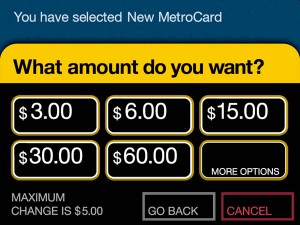
How Can I Pay for a MetroCard?
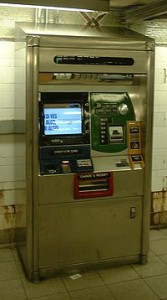
MetroCard Vending Machines inside Subway stations take cash, ATM cards, and credit cards. MetroCard Vending Machines can only return $6 change, and do so with dollar coins. Subway Station Booths only accept cash for purchase of MetroCards.
How Do I Know How Much Time/Money is Left on My MetroCard?
When you swipe a Pay-Per-Ride MetroCard through a Subway turnstile, you will see the remaining balance displayed. MetroCard Readers are available at Station Booths and in Subway Stations and if you swipe your card through, it will display the expiration date for Unlimited Ride fare, as well as the remaining balance on your Pay-Per-Ride MetroCard.
Leave a Reply Cancel reply
Your email address will not be published. Required fields are marked *
Save my name, email, and website in this browser for the next time I comment.
The OpenLab at City Tech: A place to learn, work, and share
The OpenLab is an open-source, digital platform designed to support teaching and learning at City Tech (New York City College of Technology), and to promote student and faculty engagement in the intellectual and social life of the college community.

New York City College of Technology | City University of New York
Accessibility
Our goal is to make the OpenLab accessible for all users.
Learn more about accessibility on the OpenLab
Creative Commons
- - Attribution
- - NonCommercial
- - ShareAlike

© New York City College of Technology | City University of New York

How to Use the Subway in NYC – Your Ultimate Guide for 2023/2024
Posted on Last updated: October 26, 2023
Categories Plan your trip , Transportation

When it comes to getting around in New York City, using the subway is unquestionably the best, fastest, and most budget-friendly option, costing just $2.90. With over 400 subway stations in Manhattan, Brooklyn, Bronx, Queens, and Staten Island, it’s easy to navigate the entire city.
New York’s subway operates 24/7, 365 days a year, and is managed by the Metropolitan Transportation Authority (MTA).
In this guide, we’ll provide you with all the essential information on using the subway in NYC, including reading subway maps, purchasing tickets, understanding the difference between local and express trains, and subway etiquette.
Before you take the subway in NYC
Plan your trip.
When using the NYC subway, it’s essential to account for potential delays, especially if you have a schedule to keep. Rush hours can be particularly crowded, so consider planning your trip to avoid these peak times.
If you’re new to taking the subway in New York, try to plan your route to avoid transfers, which can be a bit tricky. It’s easier to walk a little further to a station where you can take a direct train to your destination.
Download useful apps
To navigate the NYC subway effectively, consider downloading the “MYmta” app, which offers an offline subway map and trip planning. Google Maps is another excellent tool for planning your subway trips. Both locals and tourists find these apps invaluable for getting around the city. Even New Yorkers use these tools to get around.
Mask recommendations
Although it’s recommended to wear a mask while using the subway, it’s not mandatory. Respect any COVID-19 guidelines in place during your visit.
How to purchase a ticket or MetroCard
You have two options for paying your subway fare in New York. You can either get a traditional subway card called MetroCard , which is available at ticket machines or ticket booths at each station, or you can use their new OMNY system.
I would recommend using OMNY as the traditional MetroCards are set to be phased out by 2024.
Option 1 – OMNY: A convenient choice
If you plan to use the subway in New York, this is the easiest way to pay for your trip. OMNY is a new system that allows you to pay for your journey using your phone or a payment card directly at the turnstiles. See photo below.

You can make payments by tapping your payment card or using the OMNY app at the same location where you’d usually swipe a MetroCard. To use the OMNY app, you need to input your details and payment method in advance, which is best done at your hotel or residence before heading to the subway.
An advantage of OMNY is that it might save you money. Each time you pass through the turnstiles, it change you $2.90, but only until you reach an amount equivalent to a 7-day MetroCard, which costs $34. Once you reach $34, you can ride the subway for free for the rest of the week.
You can find more information about OMNY on omny.info.
Option 2 – MetroCard: Still an option
MetroCard is a subway card that you can purchase at every subway station from ticket machines or the ticket booth at the turnstiles. MetroCards can be used on all subways and buses in New York City. There’s a $1 fee for obtaining a new MetroCard, but you can reuse and refill it during your stay.
Don’t forget that MetroCards are going to be removed in 2024.
MetroCard fare options:
You can choose from a SingleRide (one-time use), Pay-Per-Ride (add a specific amount to the card), or an Unlimited MetroCard (unlimited travel for 7 or 30 days).
When you make your payment, you will be asked for a ZIP code. If you are not from the USA and don’t have a U.S. ZIP code, you can enter “99999.”
Swiping your MetroCard
To use your MetroCard, swipe it at the subway turnstiles by holding the card with the black magnetic strip facing you and downward. Swipe the card at a moderate speed, similar to how you’d use a debit card. If the machine displays “please swipe again,” it means you didn’t swipe the card correctly, and you need to try again at the same turnstile. These machines are sensitive, so this can happen frequently.
Remember that you must wait 18 minutes after swiping a MetroCard to use it again
Discounts for seniors and children
Free for children : Children under 44 inches tall can ride the subway and buses in New York for free when accompanied by a paying adult.
Senior discounts: If you are over 65 years old or have a disability, you can get a 50% discount when riding the subway in New York.
Make sure to check metro.info for the latest updates.
Understanding the NYC subway
The New York subway is typically most crowded during rush hour, which is usually Monday to Friday between 7:00 AM – 9:30 AM and 4:30 PM – 7:00 PM. If possible, avoid these times for a more comfortable ride. In contrast, midday and weekends are usually much less crowded.
The different numbers, colors, and letters
The subway lines in New York are initially categorized by different colors and then with numbers or letters. Each color represents 2-3 different lines that go in slightly different directions.
When planning your route, focus on the specific number or letter of your train, not the color. For example, the blue trains are divided into three lines called A, C, and E.
Exceptions : There’s one exception to this rule when taking the subway to JFK Airport. To reach the airport by subway, take the A train toward Brooklyn. The A train splits at the end and goes to three different destinations. To get to JFK, make sure you board the train headed for the Far Rockaway or Rockaway Beach terminus.

Express vs local
This is a common mistake made by first-time subway riders in New York. Trains are divided into express or local . Local trains stop at all stations, while express trains have fewer stops and skip some stations. Boarding an express train instead of a local one might lead to missing your stop.
The subway map will show you the express stations with white circles and local stations with black circles. Which lines that goes to each station are also clearly marked. Look at the picture below, and you’ll see an arrow pointing to Spring St, which is a local station with a black circle. To reach there, you can take the C or E train.

Uptown vs downtown
Every subway line always runs in two directions: uptown and downtown . For example, if you’re taking the A train, you can choose to go uptown or downtown. This direction is clearly marked on the subway platform.
Sometimes, the directions also have separate entrances, so it’s a good idea to note these signs before swiping your card and entering the platform. See the pictures below.

Connecting tunnels between stations
Some stations have underground passageways, allowing transfers between subway lines without leaving the system, which can be convenient if the weather is bad. See the picture below for an example of where you can find these connecting passageways.

Staten Island Ferry
To get to Staten Island, you’ll need to take a ferry. After arrival, you can continue your journey using the subway. Your MetroCard or OMNY is accepted.

Subway etiquette in NYC
Riding the subway in New York involves following specific etiquette rules to respect your fellow passengers and ensure a smooth journey. Here are some essential points to remember:
- Don’t stare at people : Respect others’ privacy and avoid staring at fellow passengers. Eye contact is fine, staring can make people very upset.
- Don’t block the turnstiles : If you need time to find your MetroCard or phone, do so before reaching the turnstiles. Blocking the turnstiles frustrates other travelers.
- Stand on the right : If you’re using escalators, stand on the right side so that those in a hurry can pass on the left.
- Let others exit before you enter : Before boarding the train, allow those who want to get off to do so. Ensure you don’t block the doors when they open so that people can exit the car comfortably.
- Move into the car : During rush hour, make sure to move as far into the car as possible when boarding. This way, more people can fit.
- Offer your seat : If you are seated and someone needs it more than you, such as a pregnant woman, someone with a children, or an elderly person, stand up and offer your seat.
- Avoid using handicapped spots : Handicapped spots are reserved for individuals with disabilities. If you don’t have a valid reason to use them, don’t block these spaces.

Announcements in the NYC subway
During your subway journey, you may hear announcements, often related to delays or train cancellations. It’s sometimes difficult to understand these messages as they can sound like they’re being transmitted through an old sci-fi microphone, with muffled sounds like “fjsf dfhfj dtjyjd.” You may need to ask someone nearby if they understood the message.
If you can’t understand the message, follow these guidelines:
- If everyone is exiting : If you notice that everyone is starting to leave the train, do the same. The conductor probably announced that the train is no longer in service, and you’ll need to wait for the next train.
- Delays : Sometimes, the conductor may announce delays due to technical issues or other reasons. If the train stops at the platform with the doors open, it typically means they are waiting for the issue to be resolved, and you can stay on the train.
Avoid empty subway cars
Sometimes, you might see that all subway cars are full except for one. Here are a few reasons why you should avoid that particular car:
- Unpleasant odors : Something in the car might smell bad.
- No air conditioning : The air conditioning might not be working.
- Safety concerns : There could be something unsafe in the car.
Subway safety in NYC
Safety is always important when using the subway. Here are some things to think about:
- High noise levels : Be prepared for noise, especially on platforms and during train arrivals. Consider using headphones.
- NEVER jump onto the tracks : It’s dangerous to jump onto the subway tracks, even if you drop something. Look for an MTA employee if something falls onto the tracks.
- Don’t stand too close to the tracks : When standing on the platform, keep a distance from the edge.
- Keep an eye on your valuables : Be attentive to your belongings, especially phones and wallets. Use inner pockets for added security.
- Don’t walk between cars: Never move between subway cars while the train is moving. This is extremely dangerous. You might see some people doing this anyways, but don’t let that fool you.
- Hold onto something when standing on the subway : The subway can be very bumpy, so make sure to hold onto a handrail or pole to avoid falling.
Weather impact
New York’s subway operates 24/7, 365 days a year, regardless of the weather. However, extreme weather conditions such as snowstorms or flooding can lead to disruptions in subway service. Stay updated on MTA’s website and social media for information on weather-related service changes.
Extremely high temperatures in the summer
During the summer months, the subway can become extremely hot. Some days, it can feel like you’re in a sauna, with passengers starting to sweat within minutes.
There’s no air conditioning on the subway platforms, but the subway cars themselves have air conditioning – most of the time! It’s a good idea to bring water with you.
Taking the subway with kids
Taking the subway with children can be a unique experience. Make sure you have everything you need, such as a stroller or baby carrier. If your child is old enough, encourage them to hold on securely.
If you plan to take the subway with a stroller, it’s smart to check the subway map in advance, as not all stations have elevators . If there’s no elevator, you’ll need to carry the stroller up and down stairs, which can be challenging if you’re alone. Luckily, New Yorkers are very friendly and someone will most likely offer to help you.
You can see which stations have elevators by checking the subway map for the handicap symbol. See example below.


Common questions about how to use the subway in NYC
Is the subway the easiest way to get around new york.
Yes, the subway is the easiest, cheapest, and fastest way to get around in New York City.
How late does the subway run in New York?
The subway operates 24/7, 365 days a year.
Do children ride the subway for free in New York?
Yes, children under 44 inches tall can ride the subway for free when accompanied by a paying adult.
How old is the New York subway?
The New York subway is one of the world’s oldest and first opened in 1904.
Can I bring my dog on the subway in New York?
Yes, you can bring your pet on the subway as long as they are in a carry bag. This rule does not apply to service animals.
Is it worth buying a weekly subway card when visiting New York?
If you plan to stay for several days, you will usually benefit from buying a weekly card. You often use the subway more times than you think. You can calculate whether a weekly card is worthwhile for your stay. If you plan to take the subway at least 12 times during your visit, it’s usually cost-effective to buy a weekly card, and it saves you the hassle of frequently refilling your card.
How many subway lines are there in New York?
The New York subway system has a total of 493 subway stations scattered across the Bronx, Brooklyn, Queens, Manhattan, and Staten Island.
When did the New York subway first open?
The New York subway first opened on October 27, 1904.
What to do if you lose your MetroCard:
If you have registered your MetroCard online, you can get a replacement. Otherwise, you’ll need to purchase a new one and load it with the appropriate amount.
How was your experience on taking the subway in NYC? Feel free to leave a comment!
The resource for Travel Gear Reviews
The Ultimate NYC Subway Guide for Tourists by a Local
April 18, 2017 By Thither Staff 2 Comments
Over 5 million people take the New York City subway every weekday. I’m one of them.
With over 400 stations, the NYC subway system, run by the MTA (Metropolitan Transportation Authority) is one of the most complex in the world. This sentence from a TimeOut NYC article sums up my feelings about the NYC subway perfectly: “ New Yorkers like to boast that the NYC subway system is the best in the world (even as we complain about how crummy it is in the very next breath )”. If you want to get a feel of the ‘real’ New York City, taking the public transport is a must.
But how do you actually use the subway? What are the dos and don’ts?
This NYC Subway Guide has the answers, local tips and more.
Feel free to use the table of contents at the left when you need to quickly jump to a part of the guide.
NYC Subway Guide Contents
- Finding Your Way Around: How to Navigate the NYC Subway
- Express Trains and Local Trains
- Best NYC Subway App and Other Resources
- Subway Fares
- Etiquette and Unspoken Rules
- Safety: How not to fall onto the tracks and die & not get mugged by random crazy people
- How To Look Like a Local on the Subway
Bathrooms in the Subway
Wifi and cell phone reception, train lines and their reputations, wheelchair accessibility.
- Interesting Things To See In the Subway
- Subway Fun Facts
- Download a Printable Version
Infographic
Navigation basics: finding your way around.

There are lots of complex methods for navigating the subway, but the easiest thing to do is simply downloading an app. But there are a ton of apps. NYC Subway by Mapway is the one I personally use, and the one which I think is the best. One crucial benefit is that it works perfectly while offline.
To find it just search “NYC subway” in the app store. It’s available for both Apple and Android .
Using it is simple. When you first view the app you are shown a NYC subway map which you can zoom in on.

By tapping on a station, you are brought up a screen with information about the station including what trains stop there.
Tap on the word “Route”, to route your trip – select a starting station, then select the station of your final destination. The app will then tell you if and where you need to transfer, how many stops it takes and approximately how long the trip will take.

Paying for a subway app is unnecessary – most of the good ones are completely free. There are ads within the app, which can be annoying, but they don’t work when you’re offline.
It occasionally gives you alerts when there are service changes or MTA travel alerts.
Also check out Citymapper for planning your NYC subway journey.
Things to keep in mind:
- Although the train colors might be the same, they can go completely different places. For example: the R and Q trains are both yellow lines, but the R train goes to Queens while the Q train doesn’t.
- On the weekends, most trains are inconsistent, slower and more annoying in general because of repair work.
- While the subway is technically operational 24/7, at night some trains don’t run or are very infrequent
- When transferring, look up at the signs. There are arrows pointing you towards where you’ll need to go and where the subway line you’re looking for is.
- Remember to make sure if you know you’re going Uptown or Downtown.
New York City Subway Map

With an app, like Mapway, you don’t need to download the subway map.
The subway map is the most essential item for navigating the subway. If you’re not familiar with the stops, it’s almost impossible to get anywhere without it. Even I, as a local, still need to refer to the subway map often since there are so many stops and there are many train lines which I almost never take.
There are subway maps within every train car, but only the confused tourists look at them. After reading this guide, you shouldn’t be one of them.
In addition to the official subway map published by the MTA, there are several visually appealing map design spinoffs. If you want to keep it simple, stick to the official MTA version, but for those interested here’s our list of the Best New York City Subway Map Designs.
Download this PDF version of the official MTA map and save it to your phone so you can use it offline. You can also view this high res JPG , although the PDF is the best quality.
Express vs Local Trains
Express trains – only stop at express stops, which show up on the subway map as black circles with white centers
Local trains – stop more often, slower, but will take you to the exact stop, smaller stations
Best NYC Subway Apps and Resources to Use
MTA.info – latest information about train delays
Mapway NYC – subway app as mentioned earlier
Subway Fares and Prices
The MTA is rundown and pretty low tech. In order to use the subway you need to buy a Metrocard, which is like a credit card but a lot thinner. In order to get into the subway, you have to swipe your card at the turnstile. (2020 update – finally, the MTA is working on rolling out OMNY – our very own contactless card or smart phone device payment to enter the subway. More on that when it actually works at all stations.)
Unlike in London, there are no zones for tracking how far you went. You pay the same fare once, regardless of how far you go.
- Subway (single fare)……………………………………………..$2.75
- Unlimited Ride MetroCard (30 days)…………………..$127.00
- Unlimited Ride MetroCard (7 days)……………………..$33.00
(The MTA offers some other packages – reduced fare, AirTrain, Express bus, but you’ll most likely not need them.) Also, check out MTA website for their official list of subway fares.
The MTA manages the New York City bus system as well as the subway system. They are somewhat interconnected and you can use the same Metrocard to pay for the bus as you do the subway. The bus is another complicated system which we won’t divulge into in this subway guide.
If you pay your fare with MetroCard, you may transfer free from local bus-to-subway, subway-to-local bus or local bus-to-local bus within two hours of the time you paid your fare. Unlimited Ride MetroCard includes all transfers free of charge. ( MTA )
There is a $1 fee for each new MetroCard purchase (on top of the fare). Metrocards expire after 1 year. If you’re a returning visitor to New York City and you want to use a MetroCard you bought from your previous trip, you won’t be able to refill your card if it’s going to expire soon. But you can ask one of the MTA workers at the manned booths at the station to swap your card for a new one.
Which should you buy?

If you’re staying in New York City for a week (or even 5 or 6 days) and want to see all the tourist attractions, I’d recommend buying the $33 unlimited. (2020 update – we have new fares for unlimited cards, check this MetroCard Calculator to calculate if its worth getting an unlimited card for your trip)
Think you can cheat the system and share an unlimited card? New Yorkers get frustrated when there’s delays or other issues with the subway and think the MTA is pretty dumb, but actually they’re not that dumb.
[ Unlimited MetroCards ] Cannot be used again at the same subway station or the same bus route for at least 18 minutes. Cannot be used by or transferred to another person until the completion of a trip for which entry was obtained.
If you aren’t sure how many times you’re going to take the subway, then get the pay-per-ride option. Since there’s a $1 fee per new MetroCard, if you’re traveling as a family or group, simply buy one MetroCard then share it.
Where to buy a MetroCard
Buy your MetroCard inside the subway station, before entering the turnstile, either from the vending machines or the person who works inside the booth. They accept cash or credit.
The art of the Metrocard swipe
Learn the skill well. You might need it when you’re running for president .
“With the MetroCard name facing toward you, quickly swipe your MetroCard through the turnstile in one smooth move.” – MTA
The subway. The transportation mode of choice for New York City’s mortals is accessible via one and only one method: the MetroCard swipe. Although seemingly straight forward, when pulling back the curtain it is revealed that swiping a MetroCard is more than a method of payment – it is an art. Something that can be done a right way and a wrong way. So how exactly do you properly execute this nuanced task? According to NYC locals, the perfect swipe falls in line with the characteristics most valued in this city: speed and efficiency. “People should swipe while walking. You shouldn’t have to stop, swipe, then walk. No one has time for that”, notes Susan, a public relations executive in Manhattan. “I’ve already got to commute for an hour from Williamsburg. Let’s make this quick for all of us.” Walk, swipe and pass the turnstile – all in one motion. Now let’s move on to the next task.
Subway Etiquette and Unspoken Rules
Eating in the subway is fine, but just don’t be annoying about it. Don’t eat anything that smells bad or is messy. Also, there will be lots of interesting things that people do or wear in the subway. Try your best not to give anyone eye contact.
If you see a subway car that’s empty, don’t get too excited. It’s usually because there’s (sadly) a homeless person living in there or it just smells bad. Also, do not lean on those poles that are used for balance if the subway suddenly stops. Other people need to use it too. Oh and please if you’re riding the subway during rush hour on a Monday morning, no one wants to hear your loud conversation. Read the room (subway car) and keep the conversation to the street.
Subway Safety
Is the subway safe? Yes. I’ve seen elementary aged children riding the subway by themselves.
But can you die? Yes as well. Here are some examples .
Safety in the subway can be broken up into two parts: (1) safety from the train/tracks and (2) safety from people within the train.
The MTA is one of the oldest subway systems in the world and hasn’t been updated in ages. Unlike the subway systems in St. Petersburg or London, the tracks are completely open, and there are no barriers. If you aren’t careful, it’s very possible to fall off the platform onto the tracks. Gawker (RIP) has a useful piece on what to do if you fall onto the subway tracks .

As for safety from other people, in a city of over 8 million, there are bound to be a number of crazies. In the event that you’re traveling at night, just exercise caution and don’t be stupid. Try to go in train cars where there are people and choose train cars either in the middle, or where the conductor is.
More likely than getting mugged by random people or getting hit by a train is getting sick from the subway. Most stations are almost 100 years old, so the subway is a pretty nasty, grimy place.
There’s usually a lot of trash and stagnant water along the tracks. It’s not uncommon to see rats scurrying around either. As for keeping the stations clean, the MTA staff do an ok job, but there are just so many humans that its impossible to always keep it clean. I once saw a MTA worker pouring bleach directly onto the tracks. Prepare to encounter smells ranging from the bizarre to repugnant.
NBC News reported a while back on just how dirty the NYC subway is. Here’s an excerpt from the article , referring to public bus handrails, but the same applies for those in the subway:
Gerba [a microbiologist at the University of Arizona] found e-coli (a bacterium often responsible for food poisoning); MRSA (methicillin-resistant Staphylococcus aureus , a staph infection that’s resistant to most first-line antibiotics); and fecal matter on handrails.
A study from Weill Cornell Medical College came to the conclusion that the NYC subway has an ecosystem of microbes but at the end of the day, “[t]here is no reason to be alarmed” and “[t]he majority of the things there are harmless”.
Basic but essential tip : Wash your hands well after getting out of the subway. Also, bring hand sanitizer with you.
Looking Like a Local
Please refer to our NYC Packing List Guide for tips on how to blend in.
Don’t expect to use a bathroom in the subway. If you do find one, more often than not it’ll be locked . Here’s a blurb from an article in UntappedCities.com :
Out of NYC’s 468 subway stations, only 129 of them claim to have restrooms. With the help of YouTube user Eron Watt, we’ve verified that only 48 of these lavatories were unlocked.
The subway has a network called “TransitWirelessWiFi”. The WiFi is only available within stations, so once the train leaves the station, you won’t have any more WiFi. It’s pretty annoying. I usually get cellphone reception in the stations, but not between stations while on the train. I believe it depends on your carrier.
These are based off of personal observations and general stereotypes. Take them with a grain of salt.
- 7 Train – very packed, passes through mainly Hispanic and Asian neighborhoods, so that is the primary train rider demographic
- E Train – smells bad
- 6, 5 and 4 Trains – always packed, train cars slightly narrower than those on other lines
- R Train – usually uses the old trains with orange seats
- C Train – widest train cars
- A Train – the longest
The New Yorker compiled and organized data on median household income from the U.S. Census Bureau to create this very cool interactive infographic . The infographic displays the income inequality within New York City according to the average income at each subway stop.

As you can see from the screenshot of the infographic above, the median income rises as the B train enters Manhattan from Brooklyn, then falls as it enters the Bronx.
There are 472 MTA subway stations according to the official MTA website, however only over 100 of those are wheelchair accessible.
In 2015, Matthew Ahn , a lawyer and the guy who “ holds the Guinness World Record for fastest time to travel to all New York City Subway stations” published an article with an image of what the New York City subway system would look like with only the stations that are wheelchair accessible (in compliance with the Americans with Disabilities Act).
The edited map (below) was reported on by numerous publications including Business Insider and Gothamist .
What the NYC subway map looks like to a disabled person:

Scroll up to our ‘Subway Map’ section to compare this map to how the subway map looks normally.
Interesting Things To See In the NYC Subway
- Churro sellers
- Subway performers from all over the world
- Murals along the walls of some stations
- Abandoned City Hall Station
- The A train is the longest train line, spanning 31 miles according to the New York Times
MTA (Metropolitan Transportation Authority) Facts

- Subway Ridership Facts http://web.mta.info/nyct/facts/ridership/
- New York City Transit History http://web.mta.info/nyct/facts/ffhist.htm
- Subway Facts http://web.mta.info/nyct/facts/ffsubway.htm
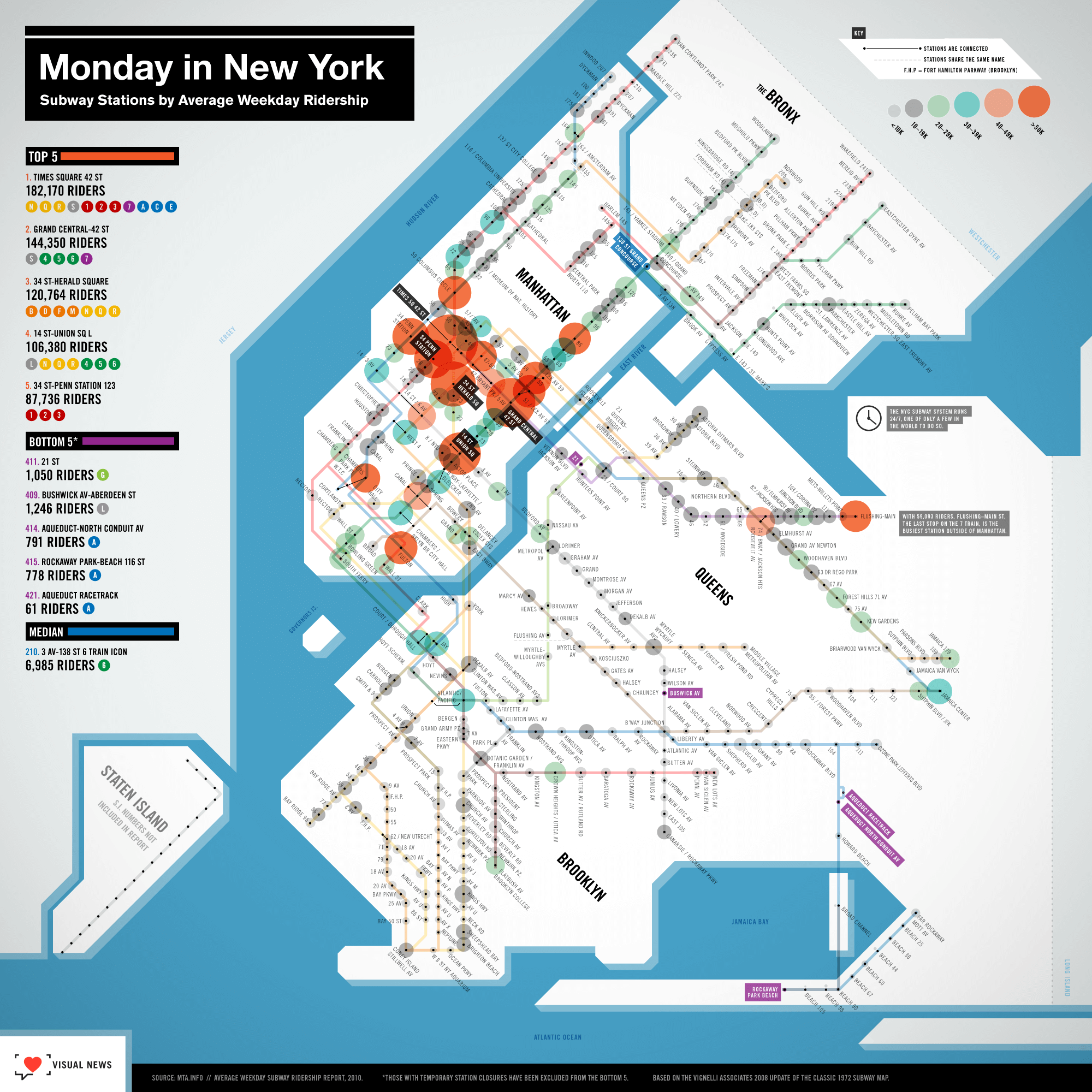
Infographic credit: Visual News . Click here to see a full size version .

Have any questions? What do you think of the NYC Subway? Leave a comment below.
More NYC Resources
- What to Wear in NYC: Packing List and Travel Advice from a Local
Thanks for reading our New York City Subway Guide by a local. If you found the NYC Subway Guide helpful, please share it!
Recent Posts
- At Home? 10 Ways to Commemorate Your Past Trips
- Noise Isolating Bluetooth Earbuds: ISOtunes FREE Review
- 10 Eco Friendly T Shirts for the Sustainable Traveler
- 15 Best Travel Board Games for All Ages
- Solo New York Restore Tote Review: An Eco Friendly Bag for Urban Travelers
November 5, 2019 at 4:56 pm
Hi! Short question … If we are 3 people traveling to New York for three days and after a week return for another three days, should we buy a regular ticket to the subway for the three of us or twice a weekly ticket at $ 32 each? Guess we’ll drive pretty much in subway. Thanks in advance – Zohar
November 5, 2019 at 6:27 pm
Hi Zohar. Depends on how much you plan on using the subway. A 7-day unlimited pass is now $33 and one ride is now $2.75. So if you plan on each person taking more than 12 rides during your trip, it may be worth getting an unlimited. If not, stick with paying as you go. Hope this helps!
[…] Navigating the NYC subway system can be daunting for first-time visitors. I recommend reading The Ultimate NYC Subway Guide. […]
Leave a Reply Cancel reply
Your email address will not be published. Required fields are marked *
Save my name, email, and website in this browser for the next time I comment.
How to Buy and Choose Your MetroCard: NYC Guide
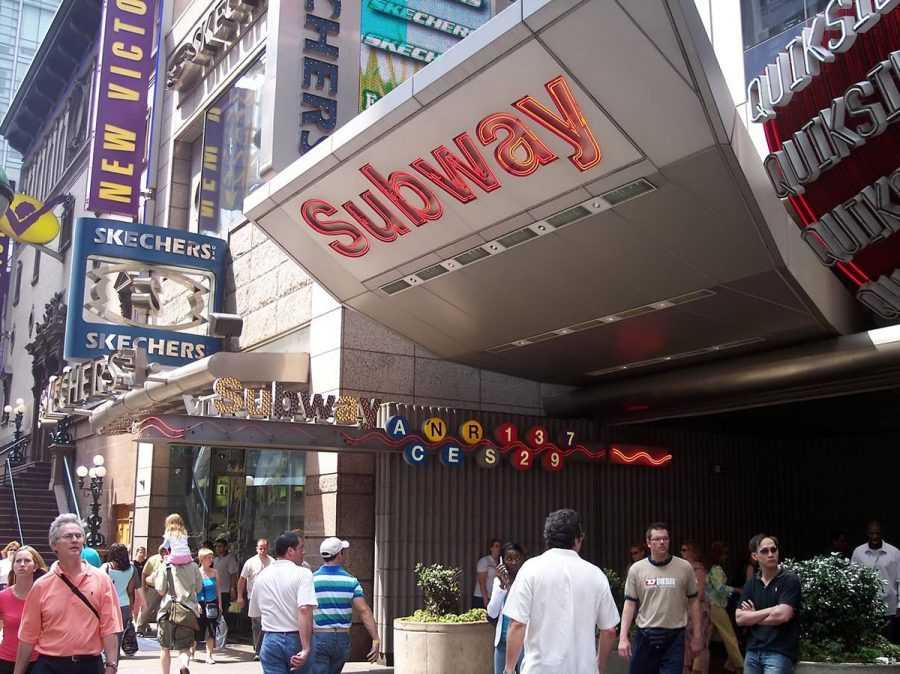
Where To Buy Your MetroCard
You can buy tickets at most subway stops, which have vending machines. There are also MTA staffers who can assist you at some stops. Keep in mind, not every subway entrance will have a kiosk available to purchase or refill your card, look out for the entrances that say “Enter with or buy a MetroCard at all times.” That means there is an opportunity to buy or refill before you have to swipe.
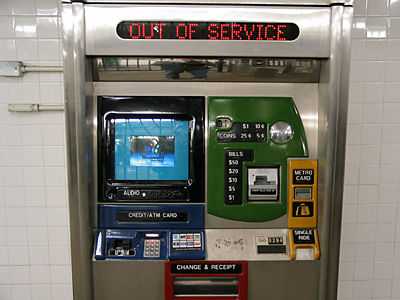
Pay-Per-Ride vs. Unlimited Ride
Depending on how frequently you think you’ll use your MetroCard, you can purchase Pay-Per-Ride or Unlimited Ride MetroCards.
Pay-Per-Ride : Each ride on a NYC subway or bus costs $2.75 per ride for each individual. The vending machine will present several amounts you can choose to add to your MetroCard, or you can add your own amount. You can add money as you go, there’s no limit to the amount of times you can refill.
Unlimited Ride : The 7-Day and 30-Day passes will give you unlimited access to the subways or buses for 7 and 30 days, respectively. You can swipe as many times as you want throughout the day. Unlike the Pay-Per-Ride, you cannot share this between people. Once you swipe, you can not use the card again for 18 minutes. The 7-day is $32.00 and the 30-Day is $121.00.

There’s a $1 surcharge on new MetroCards. If you’re traveling in a group but not traveling frequently enough to justify purchasing an Unlimited Ride card, consider sharing one MetroCard. That way, you won’t have to pay the surcharge multiple times. The card can be split between 4 people, so if you have more than 4 in your group you will have to buy two separate cards and fill them accordingly.
Want more of our NYC Guide to #MaketheMostofNYC? We’ve got the latest insider tips on sports and entertainment , dining , fun for everyone , shopping , and airport transportation .
10% off your next tour.
Join our newsletter and receive a discount now!

Congratulations!

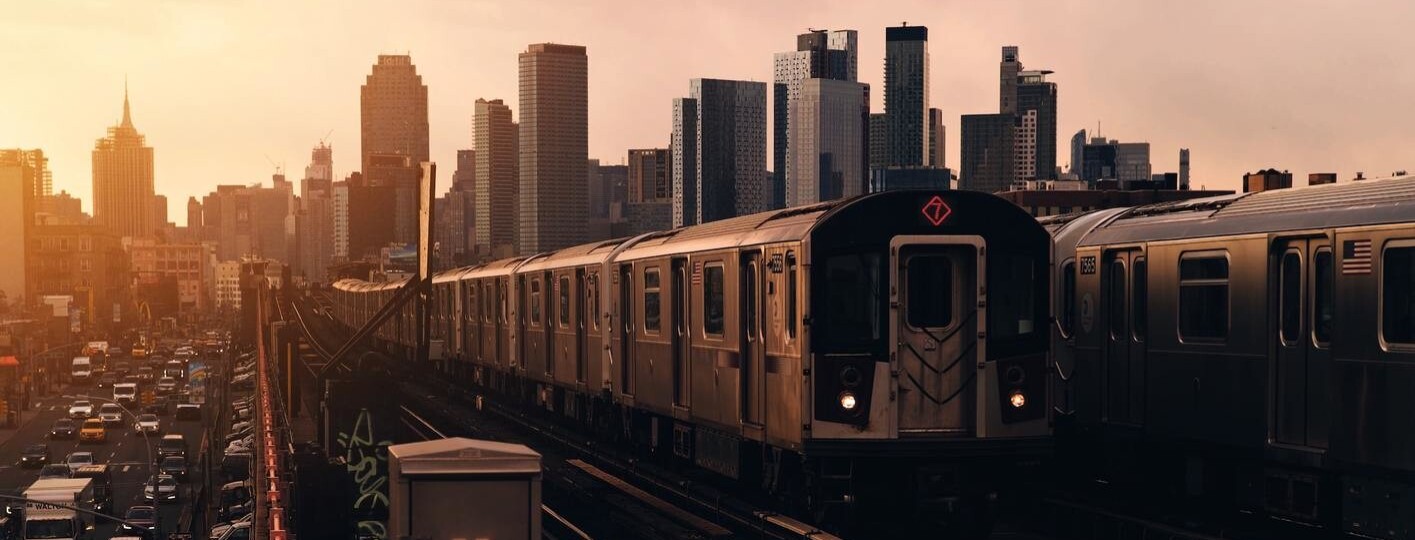
Guide to New York City Subway – Maps & Cards
Home | Travel | North America | United States | New York | NYC | Guide to New York City Subway – Maps & Cards
The New York City subway is the best way to get around the Big Apple. It’s no secret that traffic in NYC is a nightmare, so you’ll save yourself the headache if you opt for public transportation.
While the NYC subway system can seem complicated at first, it’s actually the easiest way to navigate the city. If you want to get the full experience and enjoy all the top attractions in New York , take the subway (or as locals call it, the train).
In this guide, I’ll tell you everything you need to know about using the different NYC subway lines , the fare, how to pay, and tips on subway safety and etiquette. You’ll also learn how to read the New York City subway map , so you can travel just about anywhere without any problems.
Before we begin, keep in mind that this article is specifically about the subway. If you want information about NYC’s airport shuttles and transfers , or an overview of New York’s transportation network , check out our guides on those topics.
How the NYC subway works
The New York subway opened in 1904, and as the number of daily commuters grew, so did the number of train lines. Today, there are over 20 subway lines in NYC , which you can identify by color, letter, and number. This network of lines connects the boroughs of Manhattan, Brooklyn, Queens, and The Bronx. Staten Island is the only NYC borough that isn’t connected via the subway.
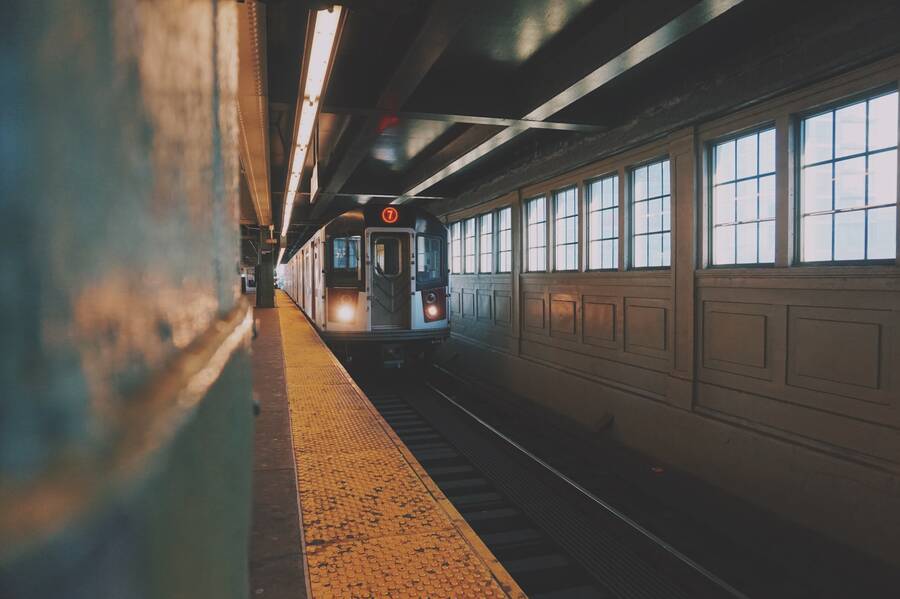
This guide is divided into sections to help you learn how to use the subway in NYC :
New York City subway maps
Subway fares in New York City
New York City subway schedule
NYC subway lines
Tips for using the subway in NYC
New york subway app, new york city subway map.
To start, let’s take a look at a map of the NYC subway to see how the different lines interconnect and travel throughout the city. You can download this map or pick up a paper map at a New York City subway station or tourism office.
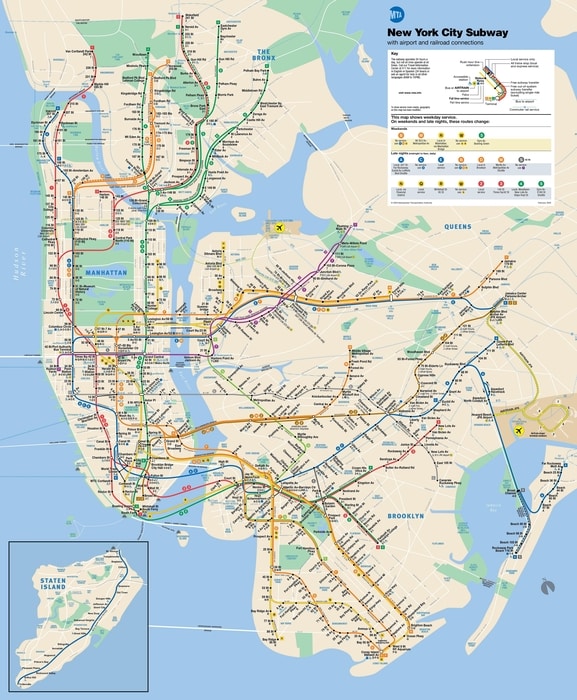
Notice that the last stop on each line doesn’t indicate which direction the train is traveling. It’s important to understand that some lines go north (Uptown), while others go south (Downtown). If you look at the name of the last stop or the district the train goes to, you can orient yourself and figure out which direction the line is traveling.
It also helps to familiarize yourself with some New York City maps so you can better determine which NYC subway routes you need to take .
Again, taking the subway in NYC will allow you to quickly move around the city, and it’s a cheap form of transportation. If you’re going to take several trains during your visit, I recommend getting the NYC MetroCard , which you can buy at the station and recharge if needed. This way, a one-way ride will cost $2.75 rather than the $3 for a single-ticket purchase.
The MetroCard is currently being phased out and replaced with OMNY, a contactless form of payment. Through 2023, you can use either method of payment. Speaking of cards, you may also be interested in getting a New York tourist card , especially if you plan on visiting the city’s main attractions.
Using the NYC MetroCard
The New York City MetroCard is easy to use, and it works on the city’s trains and buses. All you have to do is swipe the card through the card reader at any subway station, or at the card reader next to the bus driver.
The MetroCard costs $1, and you can buy it at an NYC subway station kiosk or customer service window. You can pay by card and reload the MetroCard with more money if you’re going to need any additional subway fare.
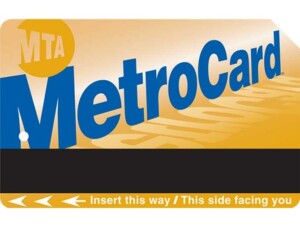
You’ll save money with the MetroCard since it reduces the one-way fare from $3 to $2.75. For longer stays in the city, you can pay $33 for unlimited subway rides for a week, or $127 for unlimited trips for a month. This New York City subway card works for all lines and most local buses, so you’ll be able to get around quickly.
Keep in mind that if you’re paying for your subway rides one by one, you can share the MetroCard with up to 4 people. However, if you opt for unlimited weekly or monthly trips, you can’t share your card with anyone. When you buy your MetroCard (or reload it), just indicate which option you prefer. For example, you can choose unlimited rides for one week, or load the card with $10 for several individual rides at $2.75 each.
Finally, be aware that the MetroCard is being phased out and replaced with OMNY. Throughout 2023, both New York City subway passes are valid and in use.
OMNY, a new way to pay for the NYC subway
By early 2024, OMNY will be the primary New York City subway card . It’s more of a virtual card since it’s a contactless form of payment that you can access via your smartphone or smartwatch.
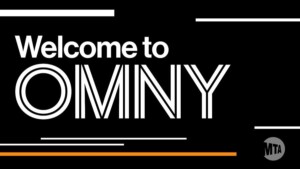
One of the main advantages of OMNY is that it has a fare-capping system. So, while rides will still cost $2.75 each, the maximum you’ll spend in a week is $33, which is equivalent to 12 rides. Any additional trips you take will essentially be free. This system works on a weekly basis, starting on Monday and ending on Sunday.
OMNY is designed to be an easier and cheaper way to use the NYC subway . Like the MetroCard, OMNY can be shared with up to 4 people, but only for up to 12 trips. A key difference is that OMNY doesn’t offer a monthly pass like the MetroCard does.
One of the most common concerns about the New York City subway is the subway schedule and hours of operation. The NYC subway is open 24 hours a day, 7 days a week .
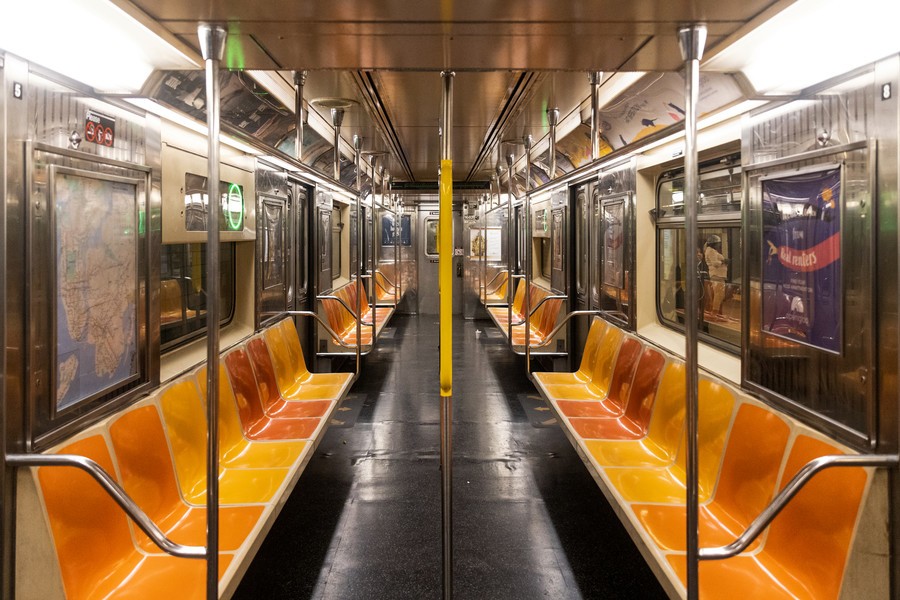
While the NYC subway hours are 24/7, the frequency of the trains varies. During the day, the trains typically arrive every 2-5 minutes, although it could be every 5-10 minutes depending on the line. At night, the time between trains can be up to 10-20 minutes. You can look at the countdown clocks at the station to see how much longer until the next train arrives, as well as which direction it’s heading.
Another thing to keep in mind is that some NYC subway routes go to less touristy areas that can be more dangerous at night. If you plan on exploring the city after dark, I recommend reading our guide to visiting NYC at night to find some safe attractions and activities .
New York has 24 subway lines and 472 stations throughout Manhattan, Brooklyn, Queens, and The Bronx. Staten Island is the only NYC borough that doesn’t have a subway line, although it does have a train, bus, and ferry.
Each subway line in NYC is indicated with a number or letter, as well as a color. These indicators will help you identify the different trains and routes across the city. Remember that different trains can travel on the same track and stop at the same station, so it’s important to pay attention to the numbers, letters, and colors.
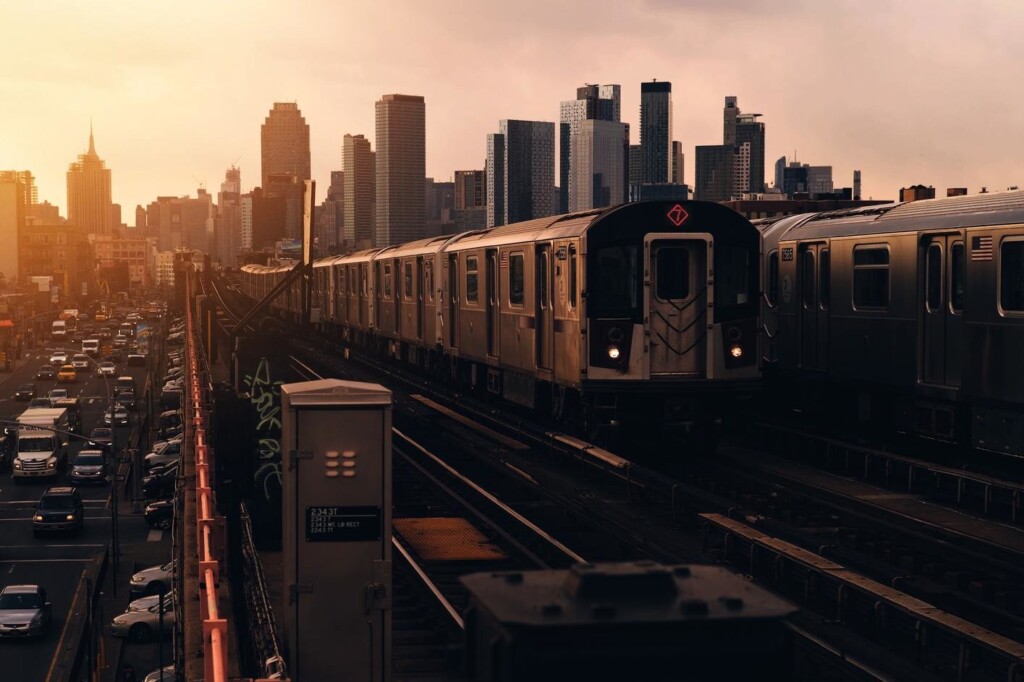
To find out which direction the train is going, there are some indicators you can look for. Check if the line says Uptown (north) or Downtown (south), or if it lists which borough it goes to. You can also look at the name of the last stop, and that can let you know which direction it’s going.
This is especially important because you want to be sure you’re using the correct subway station entrance. Even if you have identified the right line, you need to make sure it’s going in the direction you want. Otherwise, you’ll be wasting your New York City subway fare .
The loudspeakers inside each New York City subway station will announce the arrival of the next train. There are also loudspeakers and screens inside the train that will announce the next stop. However, I recommend staying alert and paying attention to your surroundings since the subway can get crowded and noisy, which can drown out the announcements .
Hopefully, the NYC subway system feels less like a mystery now. Below, I’m sharing some tips that will make taking the subway in NYC less stressful.
How to know which way the NYC subway is going
Before boarding the New York City subway , remember to check which direction the train is going. Look at the signs at the station’s entrance or inside the train to see whether it’s going Uptown (north) or Downtown (south), or if it’s going to Manhattan, Brooklyn, Queens, or The Bronx. You can also determine the direction by looking at the name of the last stop.
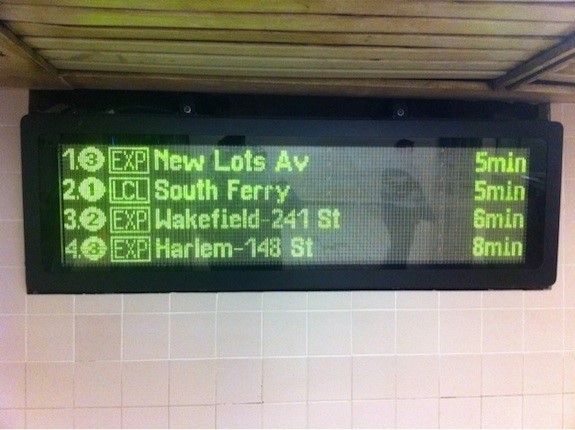
My recommendation is to first check the information at the subway station entrance since some NYC subway lines only travel in one direction. If you enter one of these stations and discover it’s going in the opposite direction you want, you’ll have to exit that station and enter another one, wasting your subway fare.
Once you’re on the train, keep an eye out for the signs and listen for the loudspeaker announcements so you get off at the correct stop.
Where to find the NYC subway line number or letter
As you enter a New York City subway station , you’ll see signs indicating the numbers, letters, and colors of the trains that pass through that station. The number or letter of the next train is usually announced over the station’s loudspeaker (for example, Line 1), although if there is a lot of noise, you might not hear it.
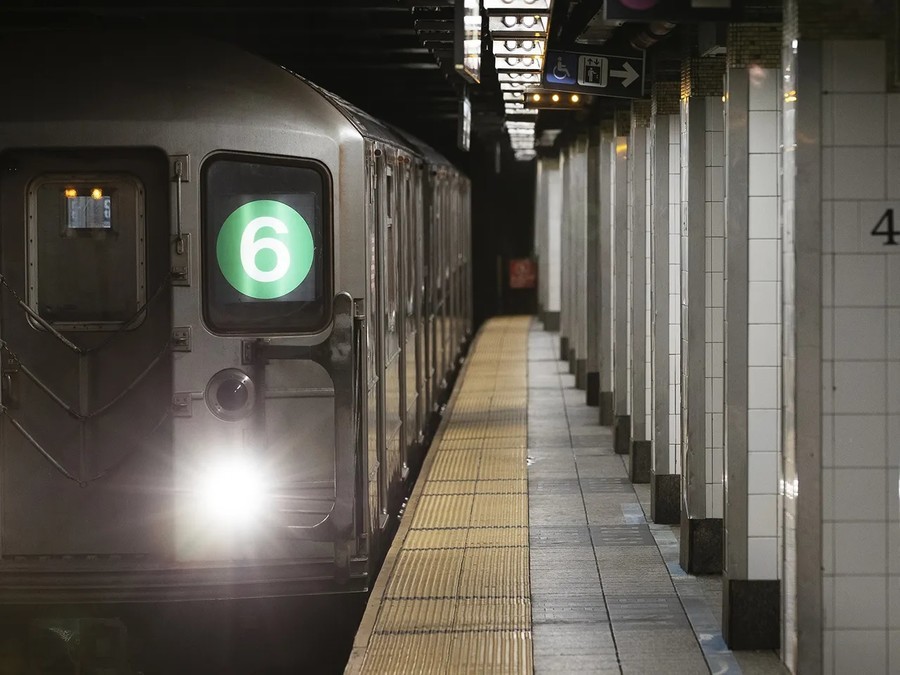
As the train approaches, you’ll be able to see the number or letter on the front and sides of the train. In my experience, it’s easier to use the numbers and letters as a guide, rather than the colors since multiple lines can share the same color.
Local and express trains on the New York City subway
Another thing to keep in mind is that there are local and express trains. Local trains stop at all NYC subway stations , while express trains only stop at the most important ones.
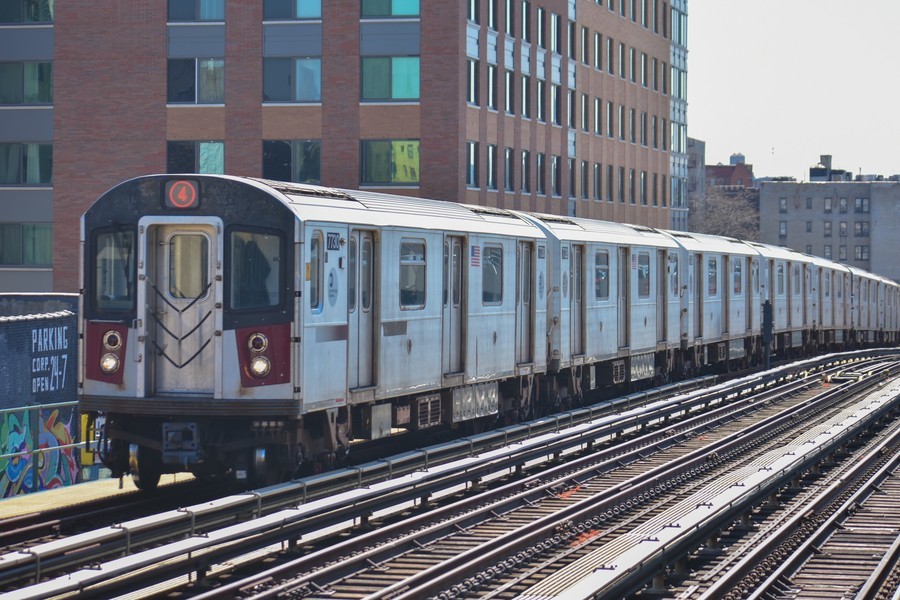
The express train is very useful for traveling long distances in a shorter time, although you should make sure that it stops where you want to go. You can find this information on the New York City subway map since express trains are marked with a white dot, while local trains have a black dot.
Using connections and transfers on the NYC subway
Depending on where you’re going, you may have to make a transfer within the NYC subway system . This isn’t as complicated as it sounds, especially if you use Google Maps. This app can show you the fastest NYC subway route , including transfers.
All subway stations have free Wi-Fi, so you should be able to connect to Google Maps. However, if you need mobile data in the U.S., I recommend the Holafly eSIM card . You can learn more about this service in our Holafly review .
Other tips for navigating the NYC subway system
The best way to avoid delays, crowds, and other problems is to avoid rush hour. The busiest NYC subway hours are from 7:00 – 9:30 a.m. and 4:30 – 7:00 p.m. During these hours, there are tons of people, mostly commuters, and very crowded trains, so you could end up waiting in line to board.
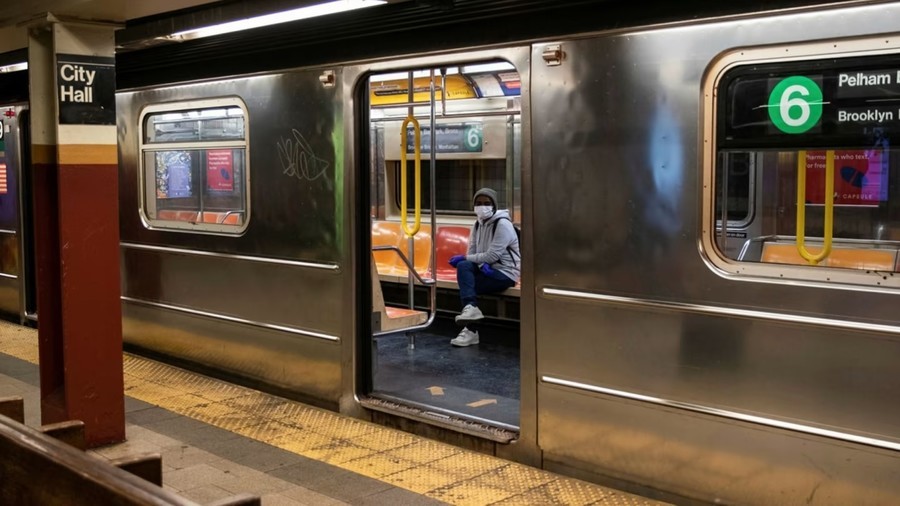
If you can, avoid these rush hours, especially if you’re new to the subway and get overwhelmed by crowds. Also, don’t be afraid to ask for help if you’re not sure whether you’re on the right platform.
Another thing I want to stress is that everyone gets lost at some point. We’ve had times when we’ve confused one line with another, even in our own city! If this happens to you, stay calm, get off the train, and consult your New York City subway map to find a route to your destination .
I mentioned that Google Maps is a convenient app for the New York subway since it can show you the most convenient way to get from one place to another, even if you need a connection or transfer.
While there is no specific NYC subway app, there are some other applications that you might find useful. MyTransit NYC Subway, Bus, Rail is available on Google Play and can show you different maps of New York’s public transportation network. If you have an iPhone, a good alternative is New York Subway MTA Map and Route Planner .
Is the NYC subway safe?
Even though some people believe the New York City subway is dangerous, the reality is that it’s similar to public transportation in any big city. In other words, it’s important to be sensible and use common sense while you’re riding the subway. This means staying alert and keeping your personal belongings close.
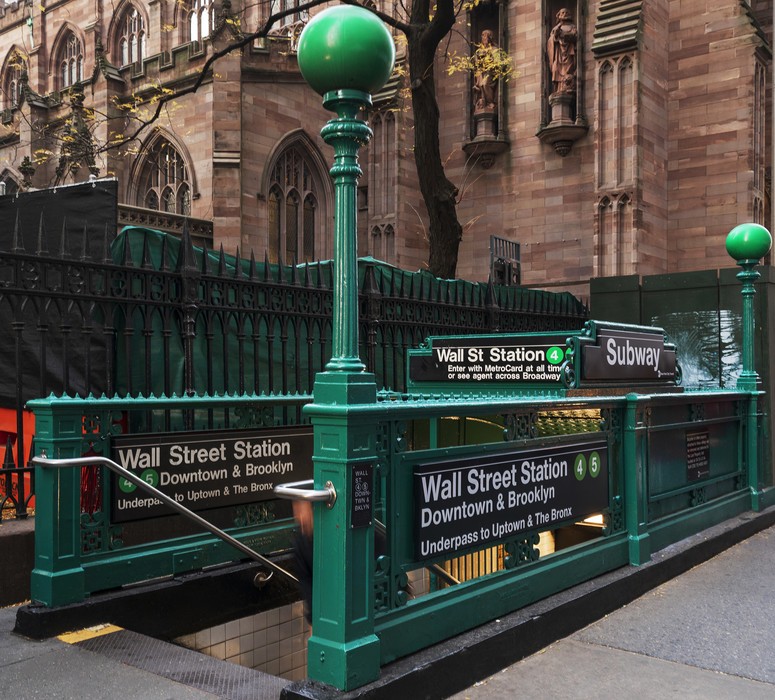
Also, there are some neighborhoods that are known to be rougher than others. For example, The Bronx is an area that I only recommend visiting during the day, perhaps with an NYC contrasts tour . In general, the subway is used by locals and tourists on a daily basis, so you should be fine. We’ve used the subway several times during our visits to the Big Apple, and we’ve never had any trouble.
FAQs – New York City subway
If you still have concerns about riding the subway in New York City , here are the answers to some commonly asked questions:
Is the NYC subway wheelchair accessible?
Most New York City subway stations only have stairs, so it can be difficult for people with reduced mobility. If you’re using a wheelchair, I recommend taking the bus or checking this link to find the subway stations that have ADA ramps or lifts.
Can you bring a dog onto the New York City subway?
You can bring a dog on the NYC subway if it’s in a carrier.
Does the NYC subway go to all New York neighborhoods?
You can take the NYC subway to different neighborhoods in Manhattan, Brooklyn, Queens, and The Bronx. Staten Island is the only borough that isn’t accessible by subway.
Do you need a MetroCard to use the New York City subway?
Yes, it is now required for all passengers to have a New York City MetroCard to ride the subway. You can also use OMNY, which is expected to replace the MetroCard by 2024.
Are there several NYC subway lines at the same station?
Yes, you can access several different NYC subway lines on the same platform, although it varies depending on which station you go to.
Is the NYC subway 24 hours?
Yes, the New York City subway runs 24/7, except in the case of accidents or construction.
Yes, New York’s subway is just as safe as any other large city. In other words, you will be fine as long as you keep your personal belongings close, and you avoid certain neighborhoods at night.
Are there any NYC subway lines to avoid?
It’s safe to take any NYC subway line during the day, although you should avoid the rougher neighborhoods at night.
Does the New York City subway run on time?
In general, the NYC subway runs smoothly, so you can expect your train to be on time. During the day, trains arrive every 5 minutes or so, although certain ones can take up to 10 minutes. In the overnight hours, the frequency between trains is longer, about 10-20 minutes. You can see all this information on the countdown clocks at every station.
Can kids use the NYC subway for free?
Kids under 3 feet 6 inches can ride the New York City subway for free when accompanied by an adult. Anyone over this height must pay the regular fare.
That’s it for this guide to the NYC subway . I hope this cleared up any confusion or doubts you had about how to use the subway in NYC . If you have any other questions, leave me a comment below, and I’ll be happy to help.
Have an amazing time in the city that never sleeps!
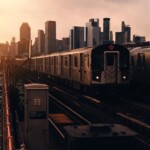
Ascen Aynat

Leave a Reply Cancel reply
Your email address will not be published. Required fields are marked *
This site is protected by reCAPTCHA and the Google Privacy Policy and Terms of Service apply.

nysubway.com
New York City Subway System
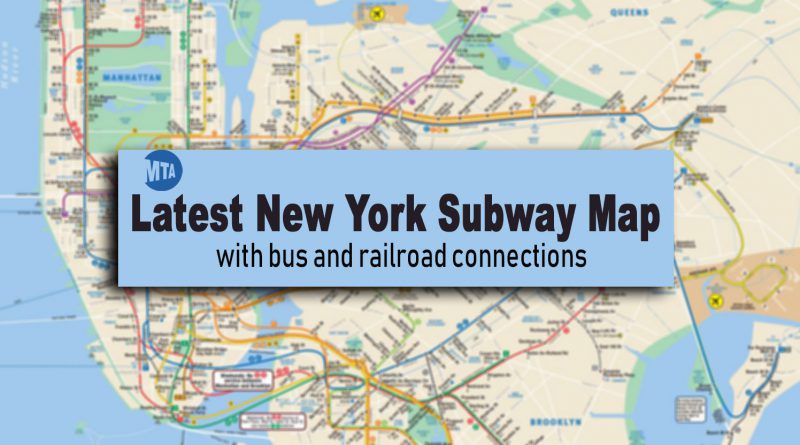
New York Subway Map: Latest Updated Version
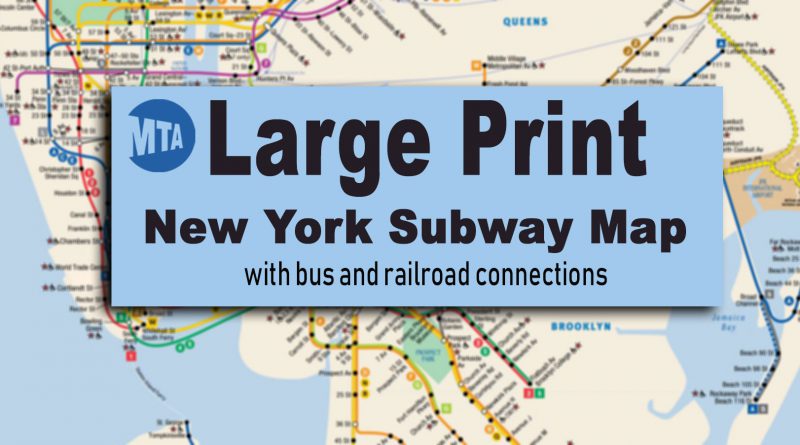
Large Print New York Subway Map
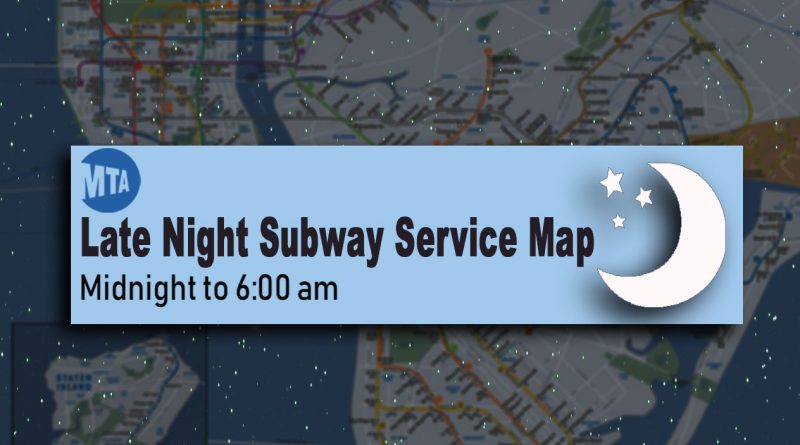
Late Night Subway Service Map
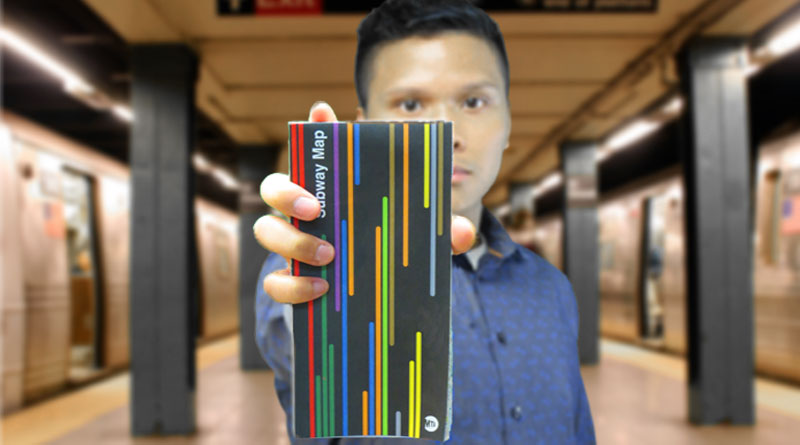
Buy The New York Subway Map
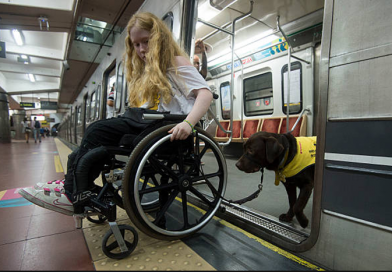
Service Animals and the New York Subway
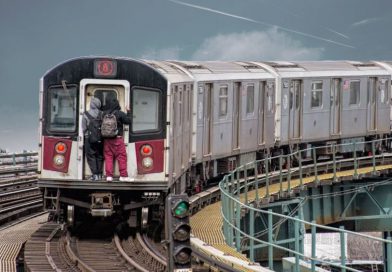
Subway Surfers on the NYC Subway
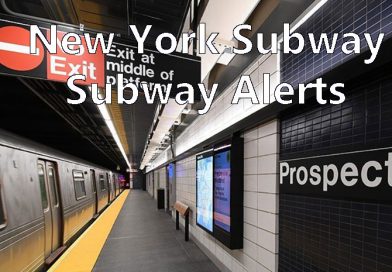
New York Subway Text and Email Alerts
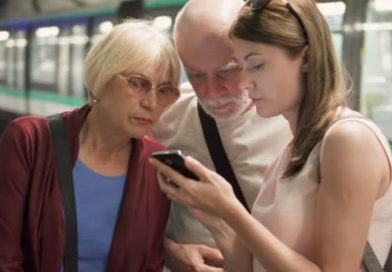
Senior Citizens on the Subway
Featured stories.
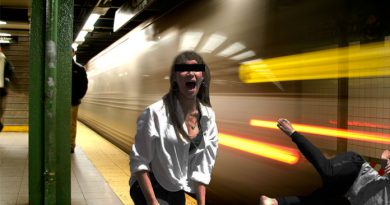
New York Subway Stations With Pushing Incidents
Criminal Pushing Incidents on the New York Subway – Attempted Murder Recent subway pushing incidents on a New York City

Subway Station Safety Tips

NYC Subway Most Dangerous Stations

Broadway Shows

Visit the NYC Sights

Contact The NYSubway.com Office Team

Attractions

AirTrain to LaGuardia Airport Planned for 2022

The Best Ways to Get To JFK Airport

Best Ways to Get to Newark Airport

The Best Ways to Get To LaGuardia Airport

Parking at JFK Airport
New York City makes history as first American city to charge congestion toll with $15 fee to enter Manhattan

New York is on track to become the first U.S. city with congestion tolls on drivers entering its downtown after transit officials approved a $15 fee for most motorists headed into part of Manhattan.
Members of the Metropolitan Transportation Authority board on Wednesday voted to greenlight the congestion pricing plan, expected to go into effect in June. The board approved only minor changes to a plan presented to the public months ago, and brushed off requests for exceptions by dozens of groups of commuters.
The vote authorizes a $15 toll on most commuter passenger vehicles that drive into Manhattan south of 60th Street, a zone that’s south of Central Park, during daytime hours. Tolls are higher for larger vehicles, and lower for late-night entries into the city, as well as for motorcycles.
Supporters of the new tolls say it will push more people to use public transport, reduce congestion to speed up public buses and emergency vehicles, reduce pollution, and raise money needed to improve the subway system.
The state Legislature approved the tolls in 2019, mandating that it should raise $1 billion per year to fund public subway and bus systems for the city’s 4 million daily riders. The pandemic and lack of federal regulation stalled the project.
Latest in Success
- 0 minutes ago

MacKenzie Scott’s game-changing philanthropy still mystifies nonprofits: ‘Her gifts are super generous, but unfortunately, they don’t provide long term sustainability’

Gen Z are increasingly choosing trade schools over college to become welders and carpenters because ‘it’s a straight path to a six-figure job’

As AI accelerates, 100 Best Companies prove the rising value of employee trust

‘Gen Z doesn’t live to work. They work to live’: The paradox that defines the best companies to work for in 2024
How the 100 best companies to work for make gen z excited about work.

Gen Z is making ‘conscious quitting’ the norm–but employees of all generations are seeking jobs that align with their values
Most popular.

Singaporean firm whose ship took down the Baltimore bridge just cited an 1851 maritime law to cap liability at $44 million

Hyundai and Kia recalled 3.4m vehicles, warning to park them outdoors because they risked catching fire. 6 months later, most are still on the road, unrepaired

90% of homebuyers have historically opted to work with a real estate agent or broker. Here’s why that’s unlikely to change, according to the National Association of Realtors

California’s new $20-an-hour fast food minimum wage is so good that schools are worried they can’t compete for cafeteria workers

Iowa basketball star Caitlin Clark, who’s never had a full-time job, is worth over $3 million—and she’s changing the financial playbook for college athletes

Don’t brush right after you eat. Dentists say there’s one thing you should do after every meal that’s better for oral—and overall—health
Advertisement
Supported by
New York Takes Crucial Step Toward Making Congestion Pricing a Reality
The board of the Metropolitan Transportation Authority voted to approve a new $15 toll to drive into Manhattan. The plan still faces challenges from six lawsuits before it can begin in June.
- Share full article

By Winnie Hu and Ana Ley
New York City completed a crucial final step on Wednesday in a decades-long effort to become the first American city to roll out a comprehensive congestion pricing program, one that aims to push motorists out of their cars and onto mass transit by charging new tolls to drive into Midtown and Lower Manhattan.
The program could start as early as mid-June after the board of the Metropolitan Transportation Authority, the state agency that will install and manage the program, voted 11-to-1 to approve the final tolling rates, which will charge most passenger cars $15 a day to enter at 60th Street and below in Manhattan. The program is expected to reduce traffic and raise $1 billion annually for public transit improvements.
It was a historic moment for New York’s leaders and transportation advocates after decades of failed attempts to advance congestion pricing even as other gridlocked cities around the world, including London, Stockholm and Singapore, proved that similar programs could reduce traffic and pollution.
While other American cities have introduced related concepts by establishing toll roads or closing streets to traffic, the plan in New York is unmatched in ambition and scale.
Congestion pricing is expected to reduce the number of vehicles that enter Lower Manhattan by about 17 percent, according to a November study by an advisory committee reporting to the M.T.A. The report also said that the total number of miles driven in 28 counties across the region would be reduced.
“This was the right thing to do,” Janno Lieber, the authority’s chairman and chief executive, said after the vote. “New York has more traffic than any place in the United States, and now we’re doing something about it.”
Congestion pricing has long been a hard sell in New York, where many people commute by car from the boroughs outside of Manhattan and the suburbs, in part because some of them do not have access to public transit.
New York State legislators finally approved congestion pricing in 2019 after Gov. Andrew M. Cuomo helped push it through. A series of recent breakdowns in the city’s subway system had underscored the need for billions of dollars to update its aging infrastructure.
It has taken another five years to reach the starting line. Before the tolling program can begin, it must be reviewed by the Federal Highway Administration, which is expected to approve it.
Congestion pricing also faces legal challenges from six lawsuits that have been brought by elected officials and residents from across the New York region. Opponents have increasingly mobilized against the program in recent months, citing the cost of the tolls and the potential environmental effects from shifting traffic and pollution to other areas as drivers avoid the tolls.
A court hearing is scheduled for April 3 and 4 on a lawsuit brought by the State of New Jersey, which is seen as the most serious legal challenge. The mayor of Fort Lee, N.J., Mark J. Sokolich, has filed a related lawsuit.
Four more lawsuits have been brought in New York: by Ed Day, the Rockland County executive; by Vito Fossella, the Staten Island borough president, and the United Federation of Teachers; and by two separate groups of city residents.
Amid the litigation, M.T.A. officials have suspended some capital construction projects that were to be paid for by the program, and they said at a committee meeting on Monday that crucial work to modernize subway signals on the A and C lines had been delayed.
Nearly all the toll readers have been installed, and will automatically charge drivers for entering the designated congestion zone at 60th Street or below. There is no toll for leaving the zone or driving around in it. Through traffic on Franklin D. Roosevelt Drive and the West Side Highway will not be tolled.
Under the final tolling structure, which was based on recommendations by the advisory panel, most passenger vehicles will be charged $15 a day from 5 a.m. to 9 p.m. on weekdays, and from 9 a.m. to 9 p.m. on weekends. The toll will be $24 for small trucks and charter buses, and will rise to $36 for large trucks and tour buses. It will be $7.50 for motorcycles.
Those tolls will be discounted by 75 percent at night, dropping the cost for a passenger vehicle to $3.75.
Fares will go up by $1.25 for taxis and black car services, and by $2.50 for Uber and Lyft. Passengers will be responsible for paying the new fees, and they will be added to every ride that begins, ends or occurs within the congestion zone. There will be no nighttime discounts. (The new fees come on top of an existing congestion surcharge that was imposed on for-hire vehicles in 2019.)
The tolls will mostly be collected using the E-ZPass system. Electronic detection points have been placed at entrances and exits to the tolling zone. Drivers who do not use an E-ZPass will pay significantly higher fees — for instance, $22.50 instead of $15 during peak hours for passenger vehicles.
Emergency vehicles like fire trucks, ambulances and police cars, as well as vehicles carrying people with disabilities, were exempted from the new tolls under the state’s congestion pricing legislation .
As for discounts, low-income drivers who make less than $50,000 annually can apply to receive half off the daytime toll after their first 10 trips in a calendar month. In addition, low-income residents of the congestion zone who make less than $60,000 a year can apply for a state tax credit.
All drivers entering the zone directly from four tolled tunnels — the Lincoln, Holland, Hugh L. Carey and Queens-Midtown — will receive a “crossing credit” that will be applied against the daytime toll. The credit will be $5 round-trip for passenger vehicles, $12 for small trucks and intercity and charter buses, $20 for large trucks and tour buses, and $2.50 for motorcycles. No credits will be offered at night.
Grace Ashford contributed reporting.
Winnie Hu is a Times reporter covering the people and neighborhoods of New York City. More about Winnie Hu
Ana Ley is a Times reporter covering New York City’s mass transit system and the millions of passengers who use it. More about Ana Ley

IMAGES
VIDEO
COMMENTS
Subways and buses. Fare for most riders on subways and local, limited, and Select Bus Service buses: $2.90. Express buses cost $7. Tap to pay your fare with your contactless credit/debit card, smartphone, or OMNY card, or pay with a MetroCard.
OMNY caps your weekly fares at $34 when you tap the same card or device for every ride. This gives OMNY customers the benefits of a 7-Day Unlimited MetroCard without paying in advance. Your first tap starts a new seven-day cap. If you spend $34 within seven days, you ride free for the rest of the cap period. If you spend less, you only pay for ...
Go to the station agent in the booth where you will show your ID and pay $2.90 for a non-refillable MetroCard good for TWO rides. You do not have to pay the $1.00 new card fee. Not all stations have agent booths. This 2-trip MetroCard will be accepted at all subway stations, local buses, and Staten Island Railway.
Tap your contactless card. Check if your contactless credit, debit, or reloadable prepaid card has the contactless symbol on the front or back. ... Manage your travel cards. ... Rolling out OMNY, everywhere for everyone. 1. Subway and bus rollout. 2019 to 2020. Completed. You can tap and go throughout New York City on all subways and buses. 2 ...
If you ride the subway or local bus. Fewer than 13 rides per week or 47 rides per month. Choose this option. Pay-Per-Ride. Purchase. $5.50 ($5.78 value, 5% bonus added when you buy or add $5.50 or more to your MetroCard) Your cost per ride. $2.62 (effective fare with 5% bonus) 13 rides per week.
New York MetroCard prices. A single ride is $2.90 and tickets are sold at vending machines. A 7-day MetroCard costs $34.00 and is a popular New York subway pass option. Some contactless bank cards can tap on and off through the OMNY system. If you take 12 subway trips in a week, you'll cap out at the same price as a 7-day MetroCard.
Essential Information About New York City MTA MetroCards. Pay for your subway and bus rides with ease using your Metrocard. A MetroCard is a thin plastic card that is used to pay for bus and subway fares in New York City. You can buy them at a kiosk inside of nearly any subway station. They are also sold at some newsstands.
UPDATE:How to pay using the OMNY readers (not the MetroCard): https://youtu.be/g2_aEHQlPSQHow to ride the SUBWAY: https://youtu.be/9fL5etTRZzUHow to ride the...
The MetroCard is essential if you want to use New York's transportation, as you will only be able to take the Subway using this card. Although for buses you can still pay with cash (exact amount), to use the subway you need to have a Metrocard. You can either purchase the pay-per-ride or the unlimited Ride MetroCard.. Pay-per-ride MetroCard. If you buy multiple rides with this card, the cost ...
Through OMNY, MTA riders can use a device or contactless card to pay their fare on all bus and subway trips. By 2023, physical MetroCards will be phased out and replaced with the OMNY system ...
The MetroCard. The MetroCard is a thin, credit-card sized farecard made of (cheap) plastic. It has been the farecard for the subway for many decades, but is being replaced by the new contactless OMNY system mentioned earlier. The MetroCard machines will disappear completely in 2024, but you can still use the MetroCard until late 2024.
7-Day Unlimited Ride MetroCard. If you choose the 7-Day Unlimited Ride MetroCard, you may travel by New York subway and on all local buses for an unlimited amount of time during 7 consecutive calendar days. The validity period starts from the first time you use the card.
Using the MTA's new OMNY system (One Metro New York), riders will be able to pay their fare by tapping their smartphone or contactless credit or debit card on a big blue reader at the subway ...
The MetroCard is a refillable fare holder. When you buy a new MetroCard, there is a $1 surcharge in addition to the amount you've put into the card. Depending upon your needs, there are several options to choose from when selecting a MetroCard. There's the Single Ride which costs $2.75 and is only available at vending machines.
Using a MetroCard. Hold the card so the black magnetic strip is facing you and on the bottom of the card. (The clipped corner should be on the upper right.) Swipe your card through the reader at a medium speed, similar to how you would swipe a credit card in a credit card reader. When the turnstile screen says GO, proceed through the turnstile.
When it comes to getting around in New York City, using the subway is unquestionably the best, fastest, and most budget-friendly option, costing just $2.90. ... (one-time use), Pay-Per-Ride (add a specific amount to the card), or an Unlimited MetroCard (unlimited travel for 7 or 30 days). When you make your payment, you will be asked for a ZIP ...
If you pay your fare with MetroCard, you may transfer free from local bus-to-subway, subway-to-local bus or local bus-to-local bus within two hours of the time you paid your fare. Unlimited Ride MetroCard includes all transfers free of charge. ( MTA) There is a $1 fee for each new MetroCard purchase (on top of the fare).
Pay-Per-Ride: Each ride on a NYC subway or bus costs $2.75 per ride for each individual. The vending machine will present several amounts you can choose to add to your MetroCard, or you can add your own amount. You can add money as you go, there's no limit to the amount of times you can refill. Unlimited Ride: The 7-Day and 30-Day passes will ...
The New York City MetroCard is easy to use, and it works on the city's trains and buses. All you have to do is swipe the card through the card reader at any subway station, or at the card reader next to the bus driver. The MetroCard costs $1, and you can buy it at an NYC subway station kiosk or customer service window.
New York Subway system transports over 5 million passengers every weekday and about 3 million passengers each day on the weekend. This site has the official subway maps, line maps, train and station information, MTA Twitter, MTA contact information, Metrocards, subway safety and popular tourist destinations.
Subway and rail service changes: March 29-April 1, 2024. March 29, 2024 10:30 am ... Getting to NYC-area stadiums and arenas on transit. See All. More resources Accessibility Paratransit, reduced fares, travel training, and more. Transparency Our leadership, performance, budgets, financial and investor information, and more.
New York Gov. Kathy Hochul. Adam Gray/Getty Images New York is on track to become the first U.S. city with congestion tolls on drivers entering its downtown after transit officials approved a $15 ...
Fares will go up by $1.25 for taxis and black car services, and by $2.50 for Uber and Lyft. Passengers will be responsible for paying the new fees, and they will be added to every ride that begins ...
March 28, 2024. 62. NEW YORK (AP) — New York is on track to become the first U.S. city with congestion tolls on drivers entering its central business district after transit officials approved a ...
MTA. The latest version of the MTA app (formerly known as MYmta) makes it easier than ever to get details on subway, bus, and railroad service—straight from the source. You can plan a trip, see your train's arrival time, get service alerts for your route, or find your bus in real time. And important station information, like planned work or ...